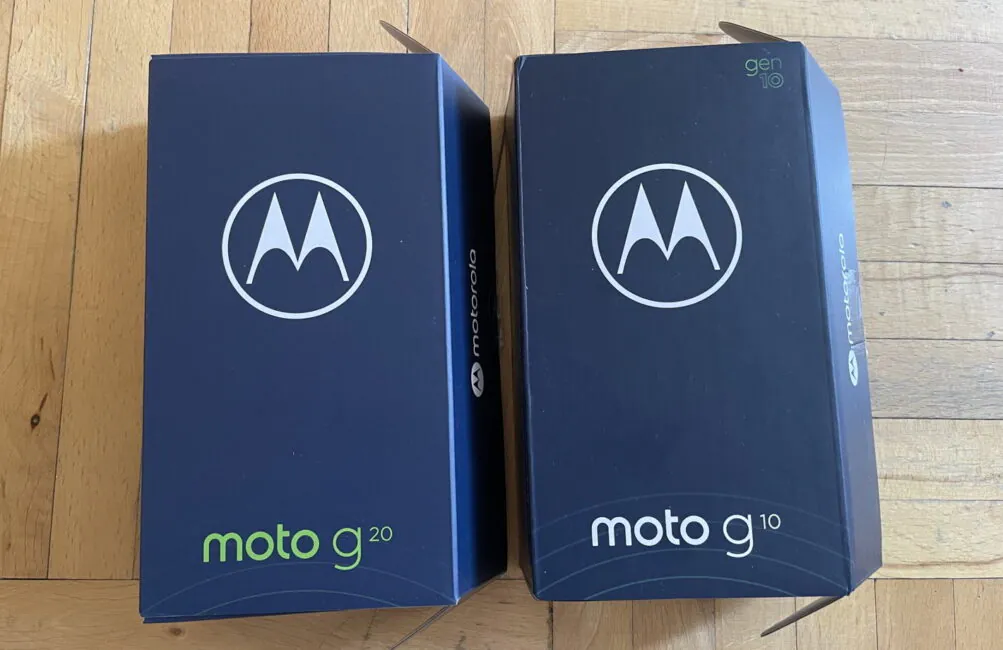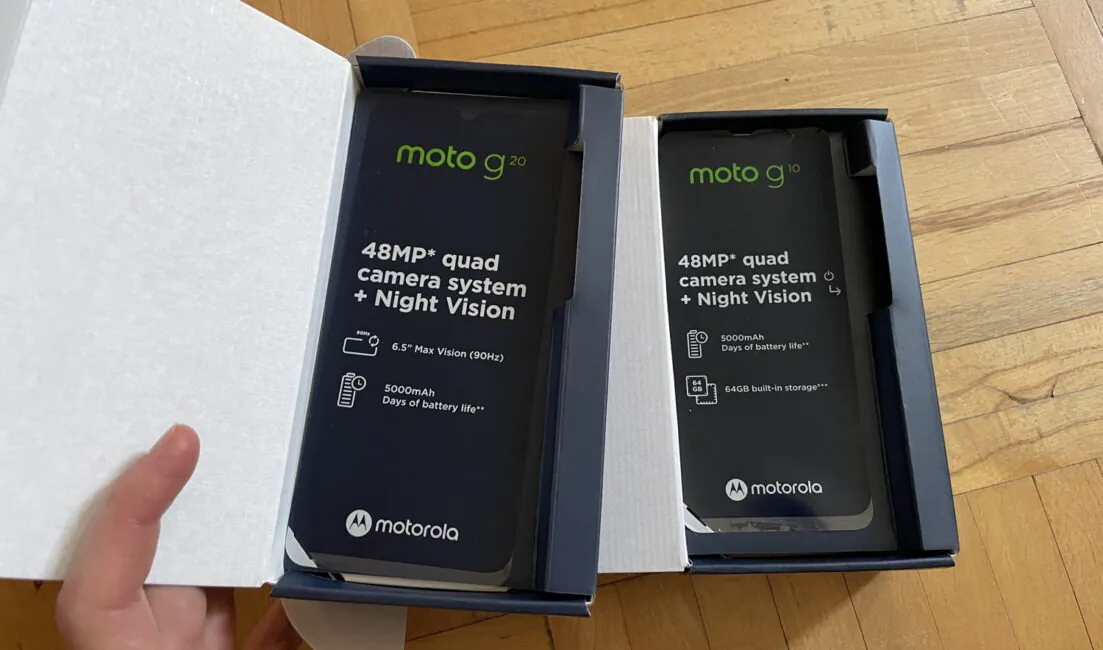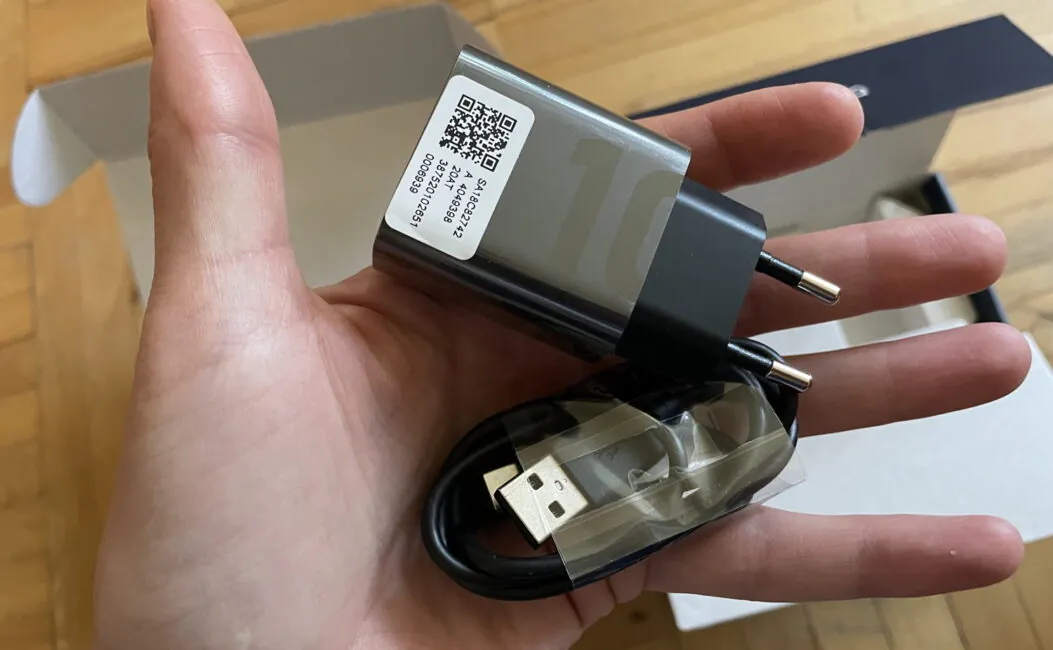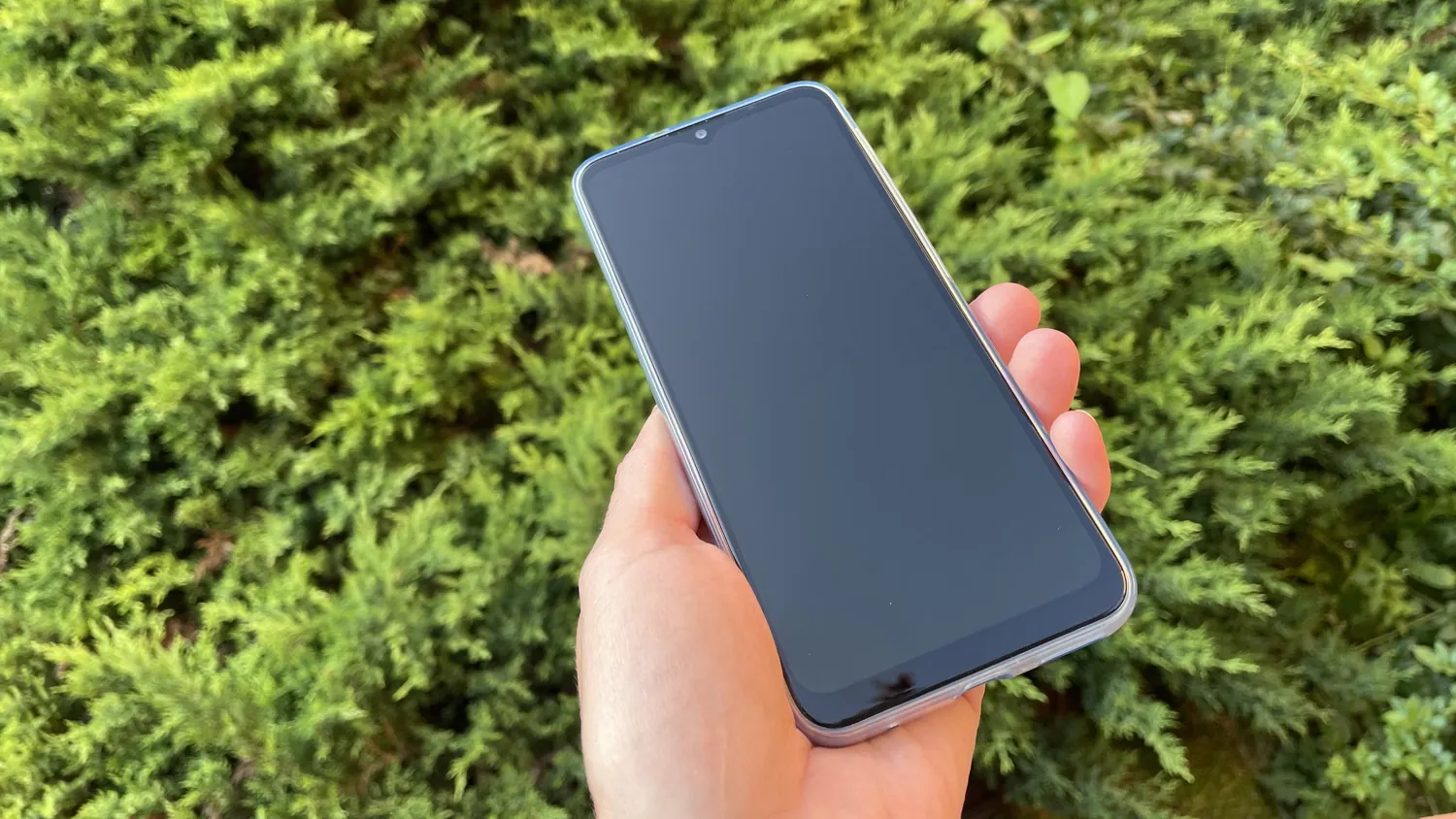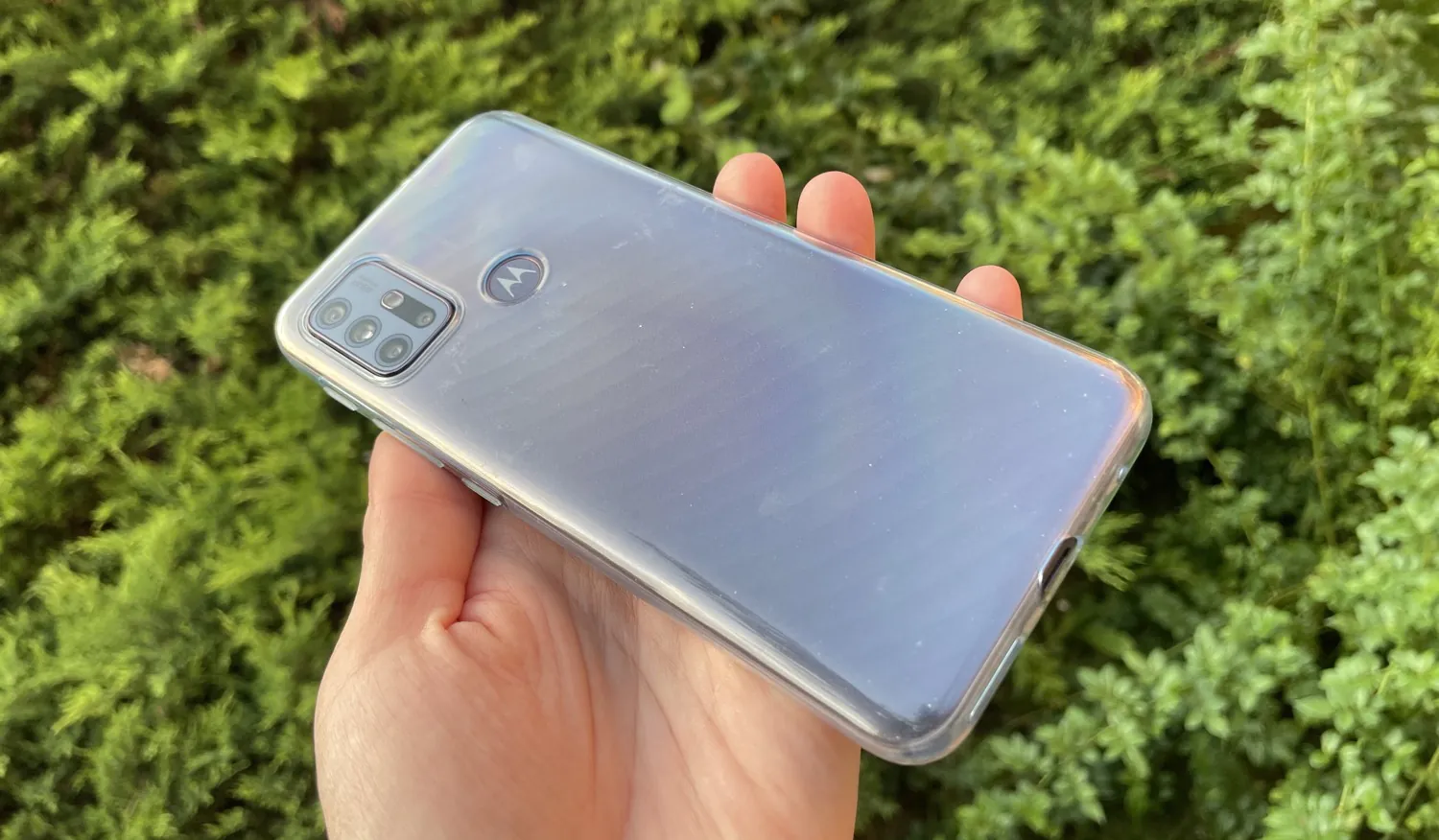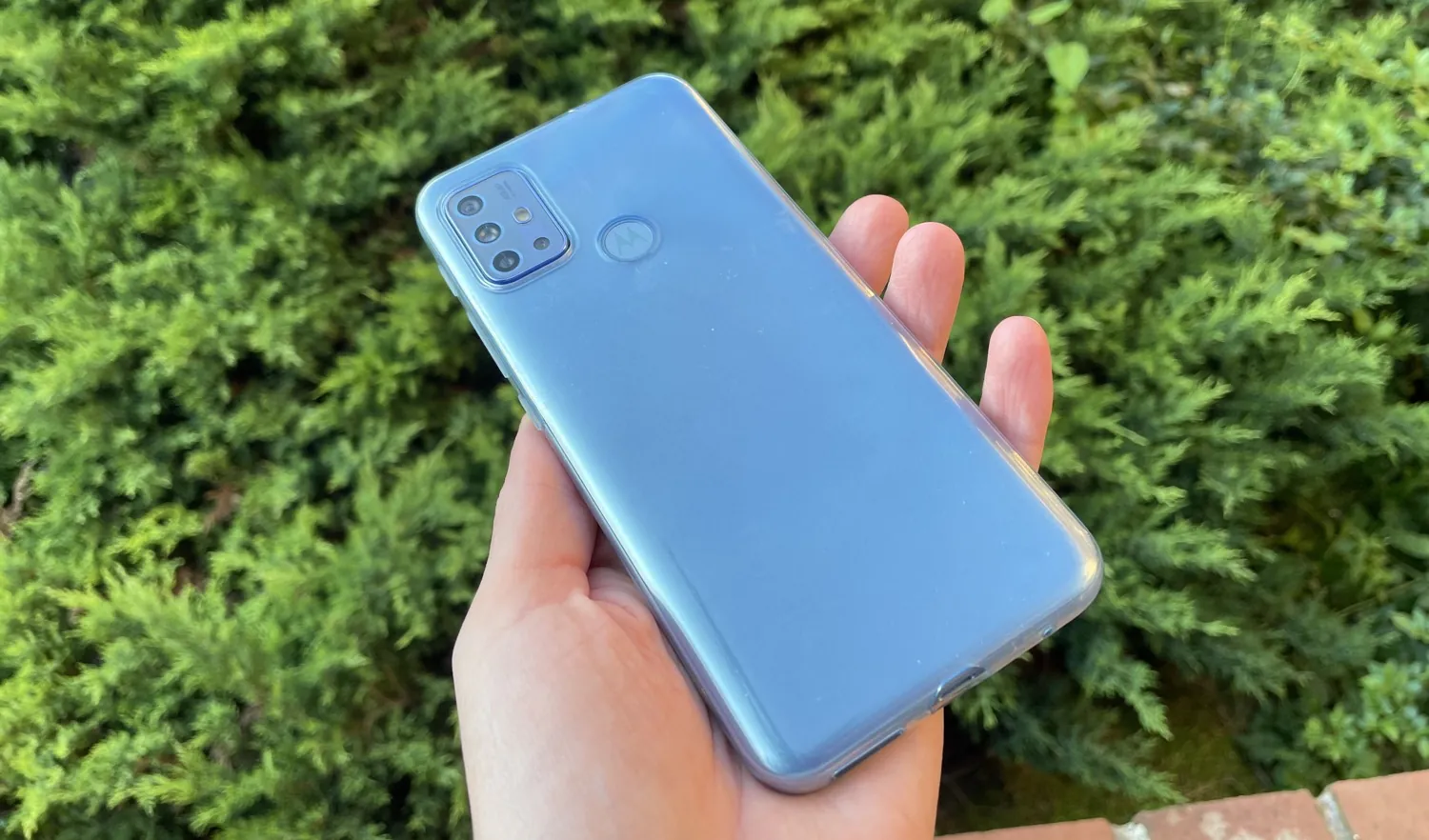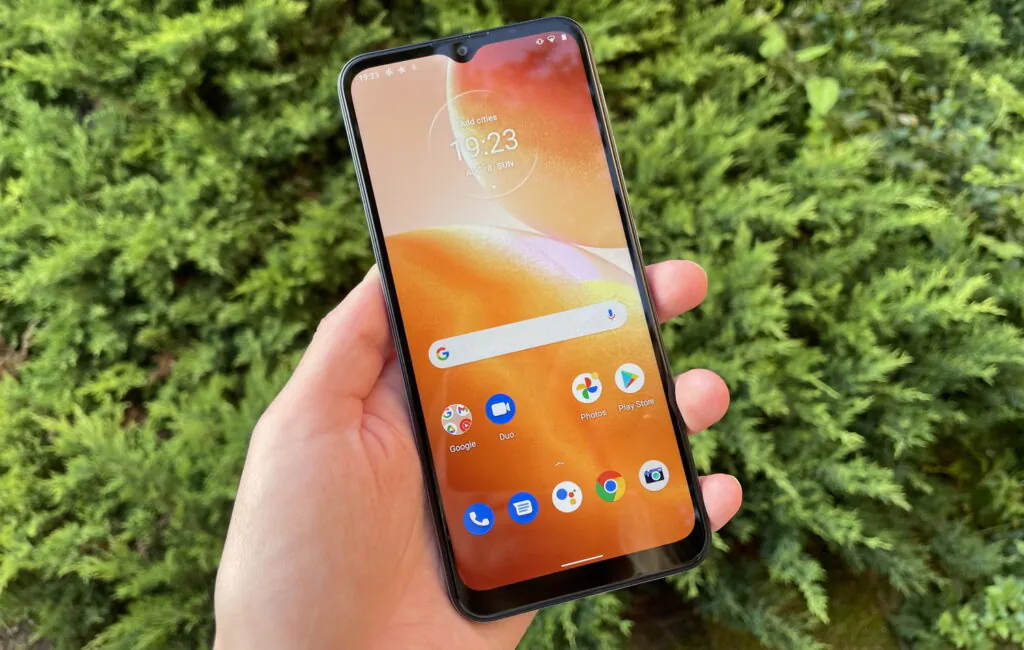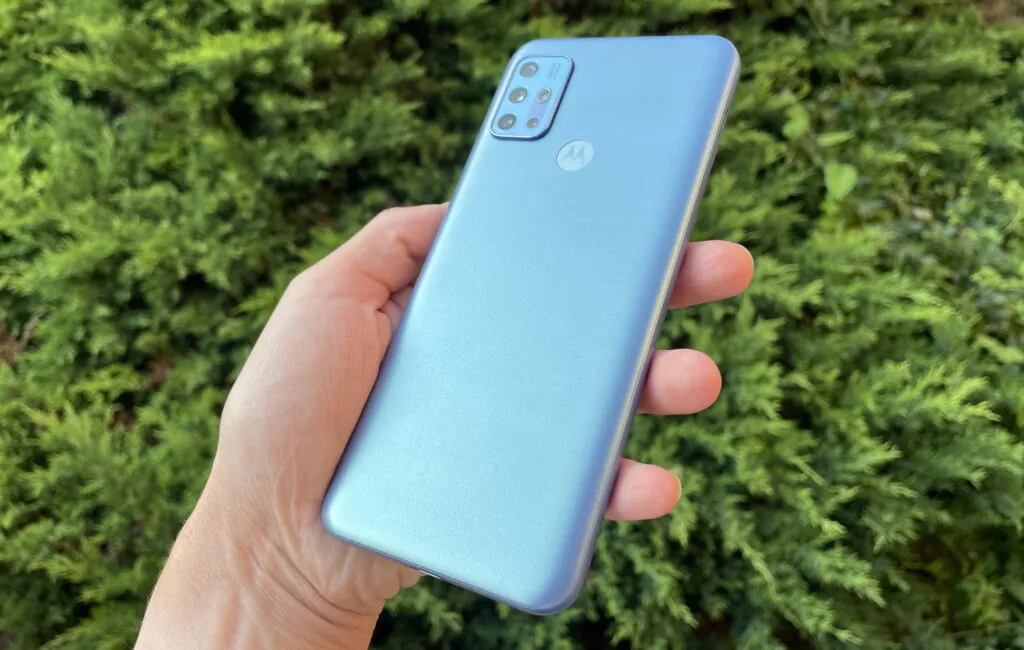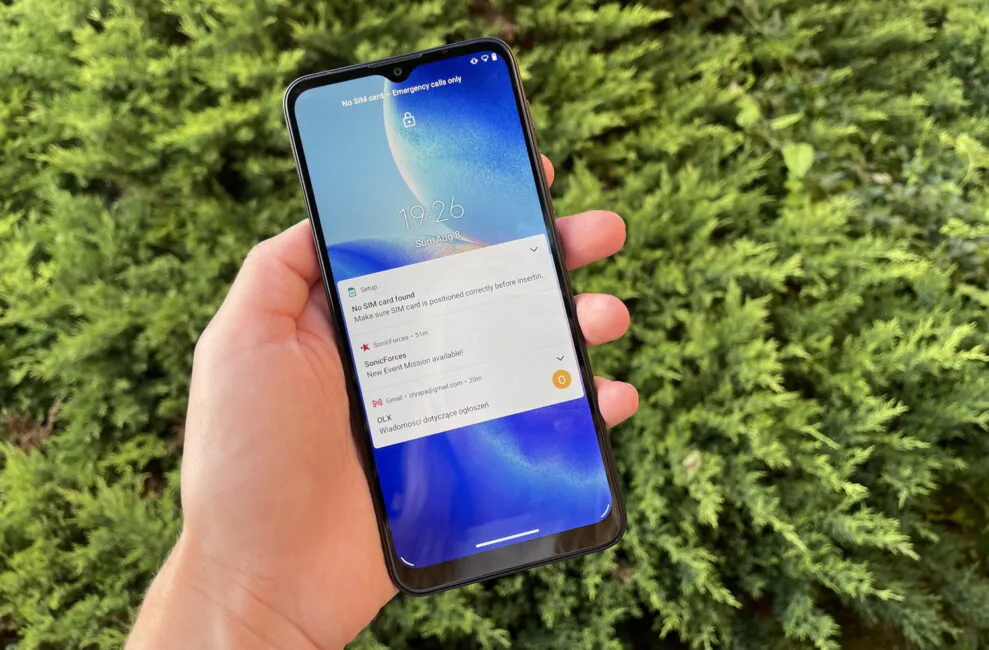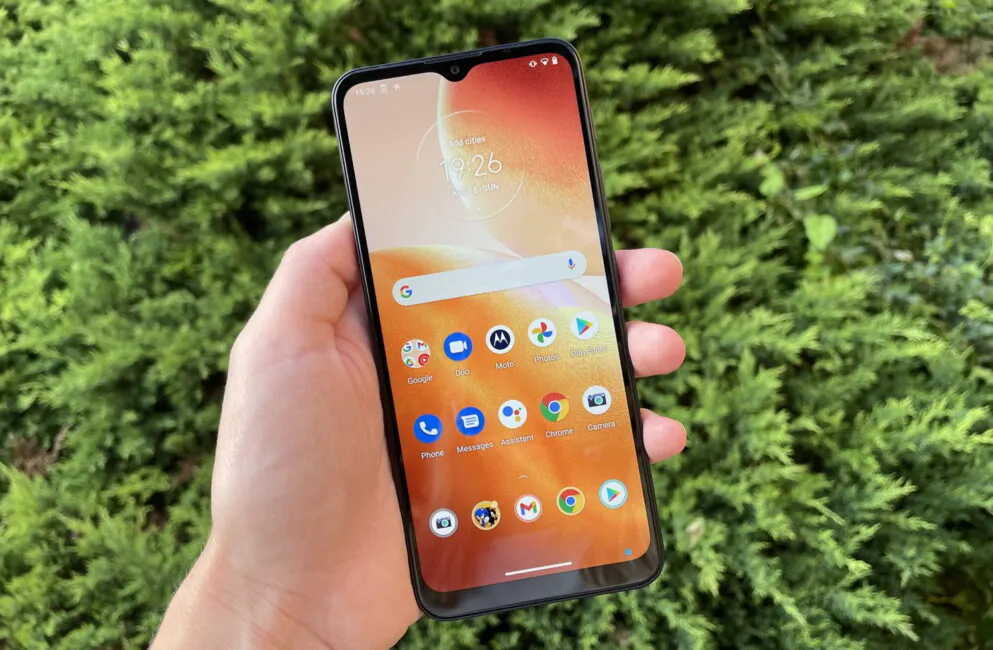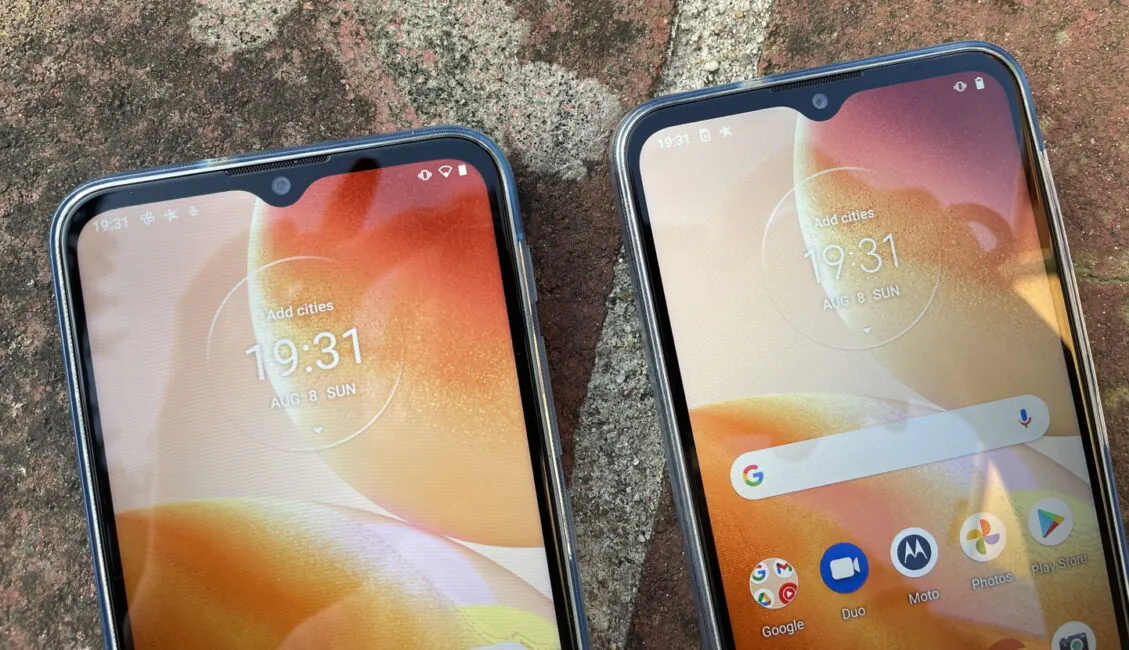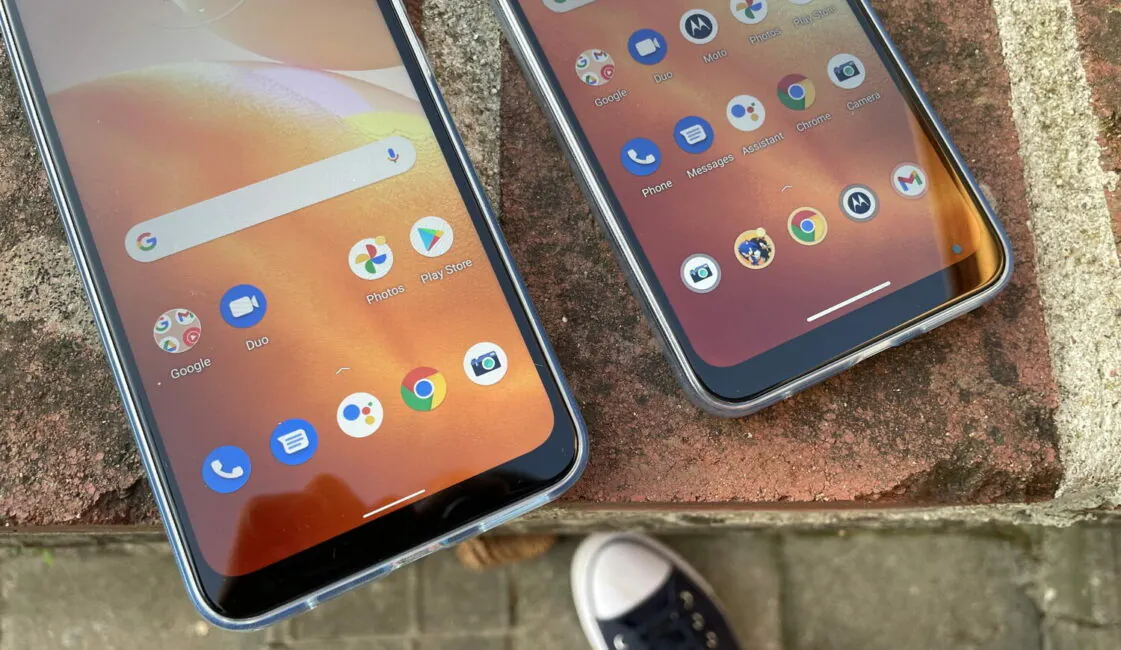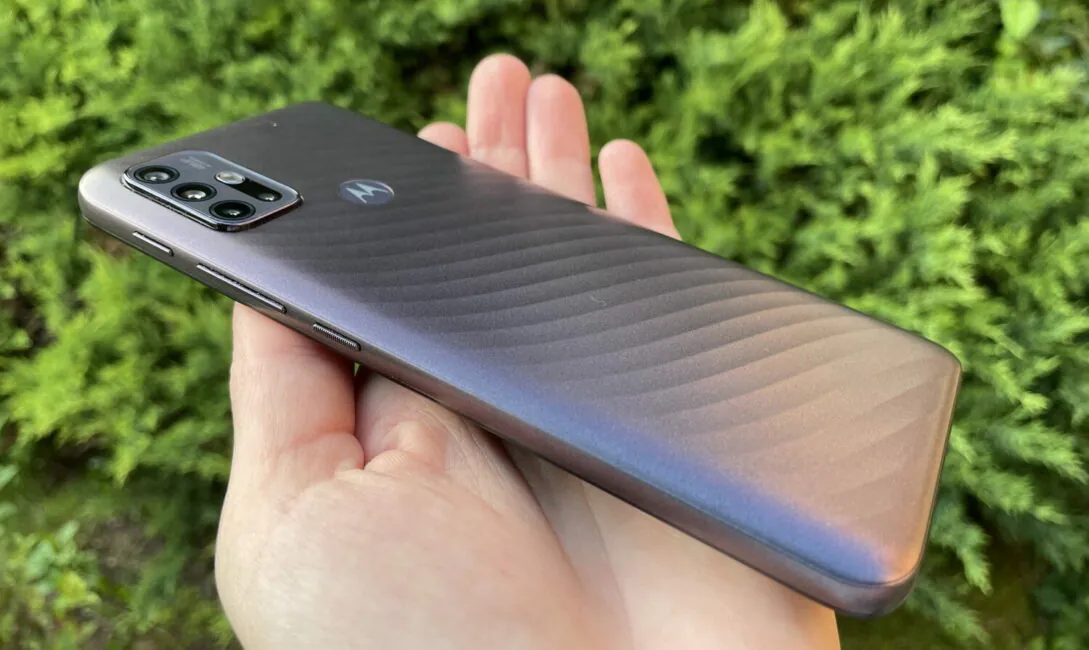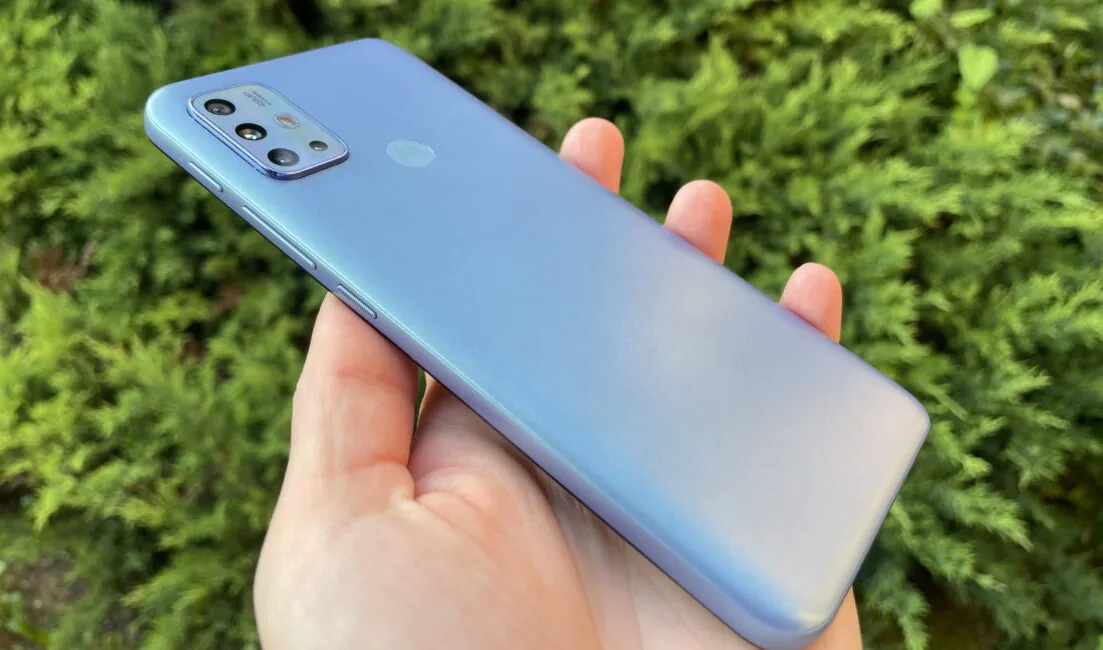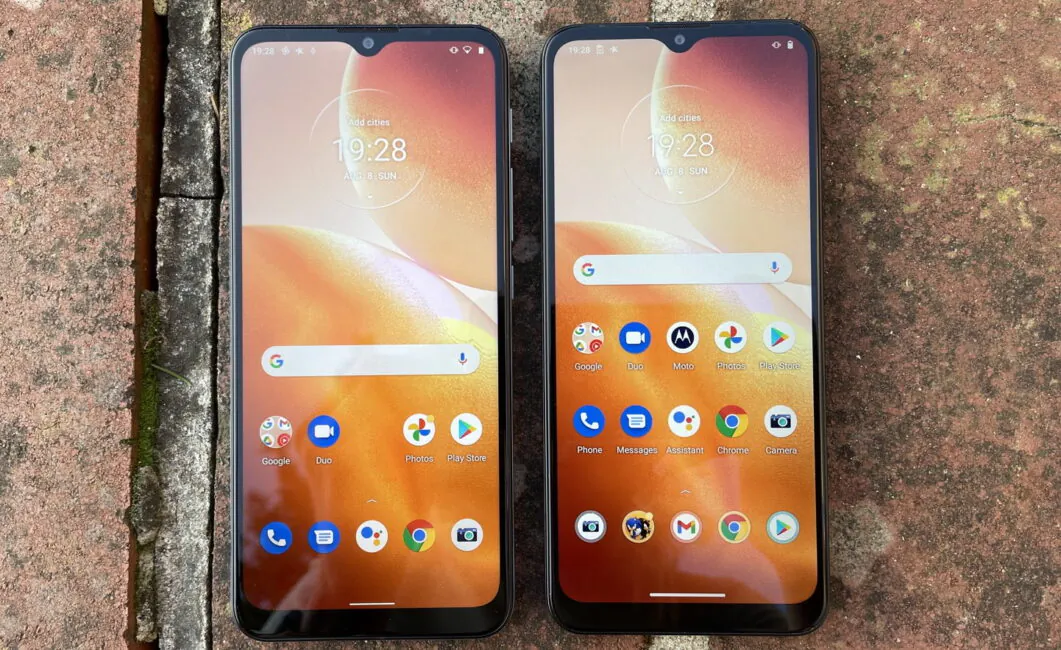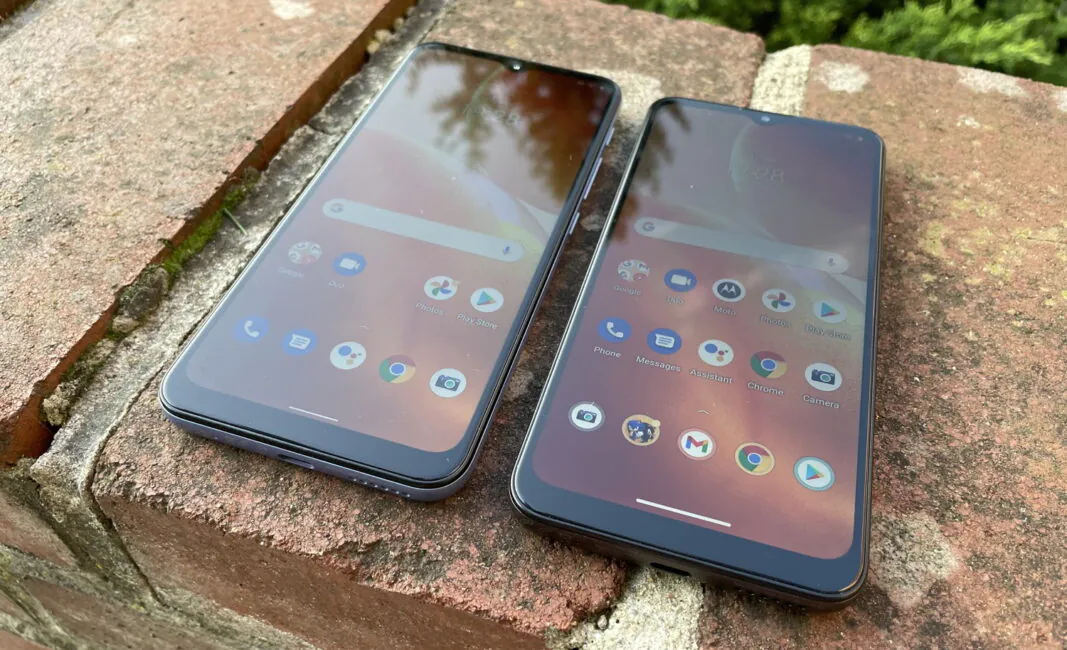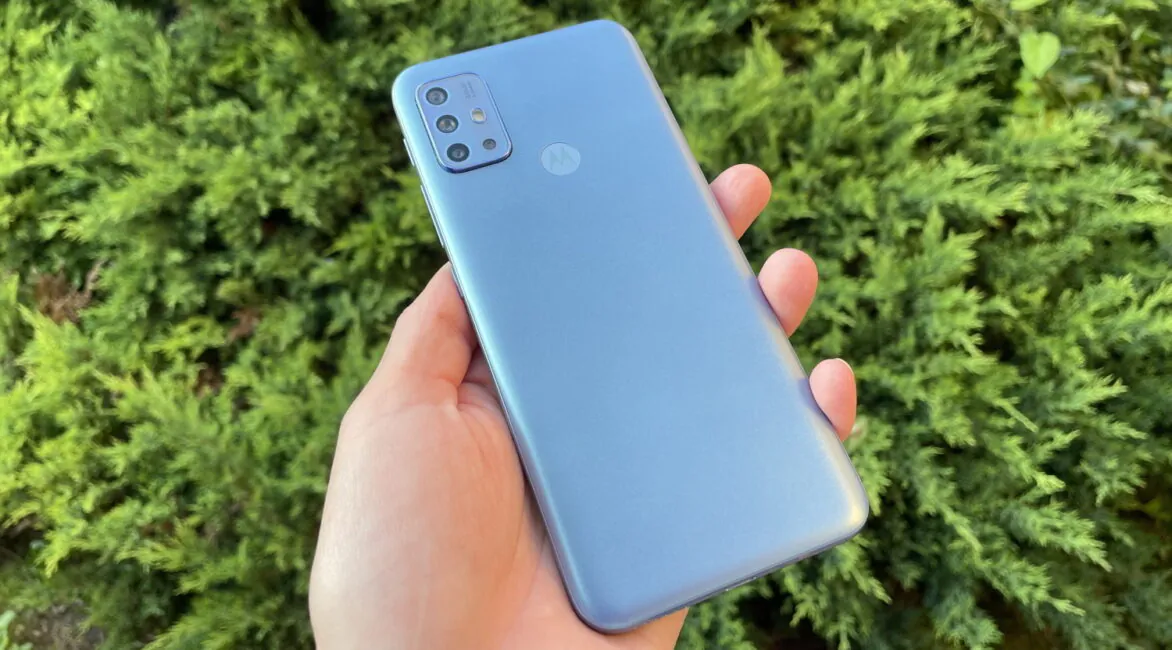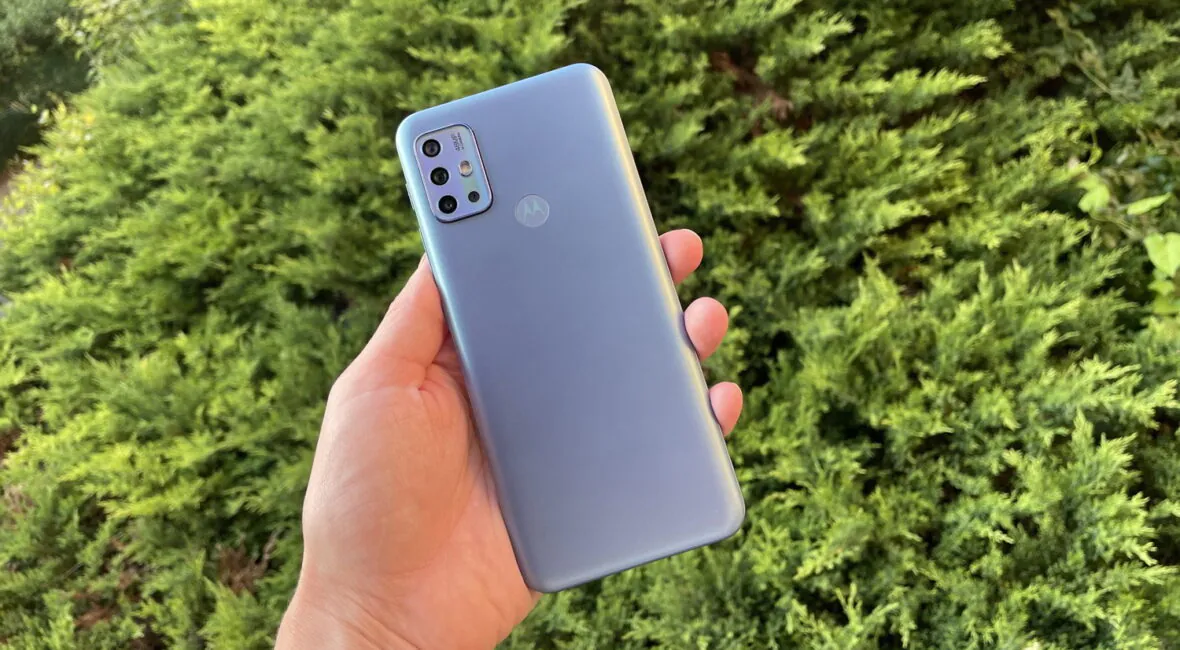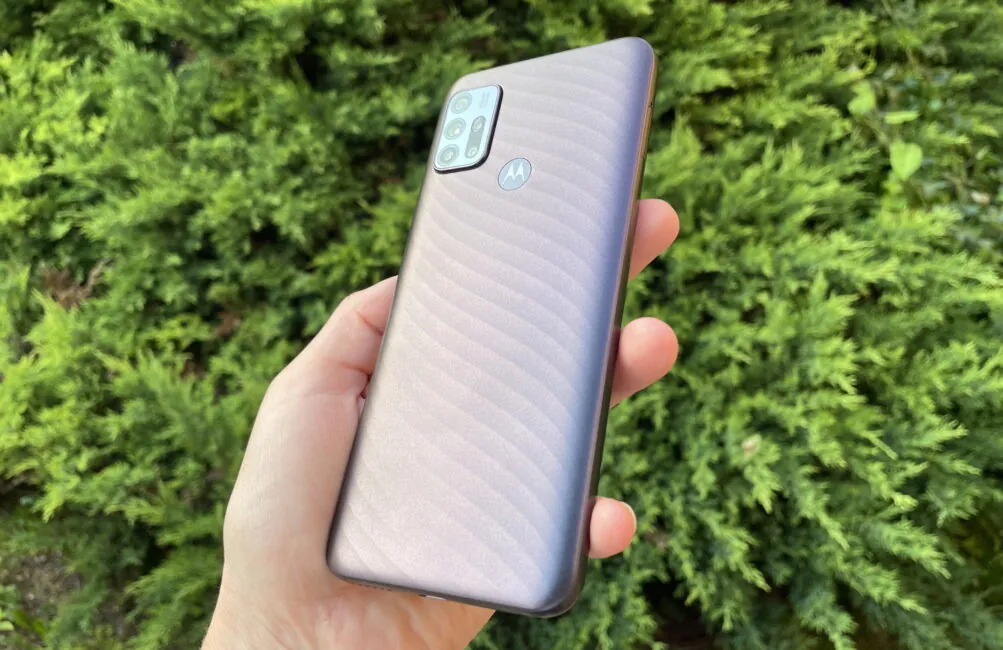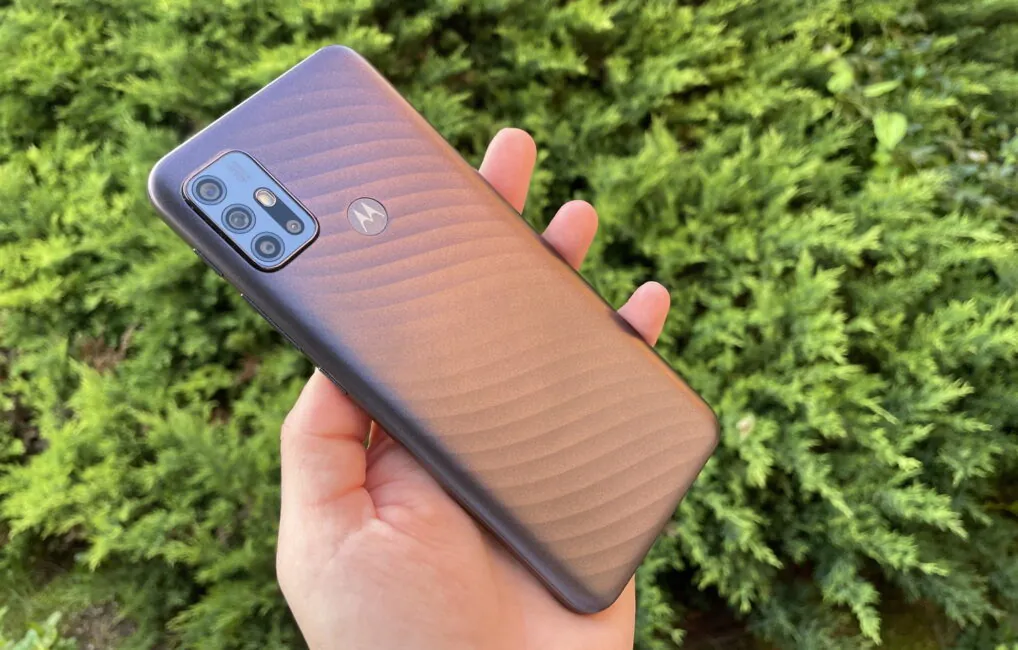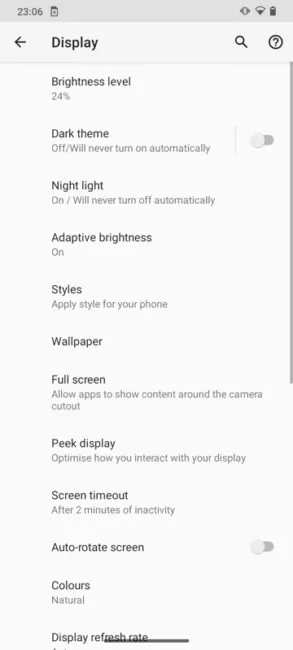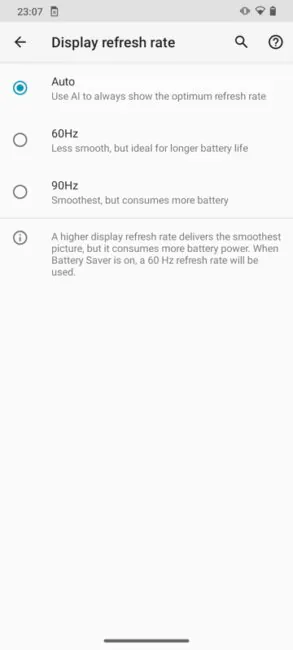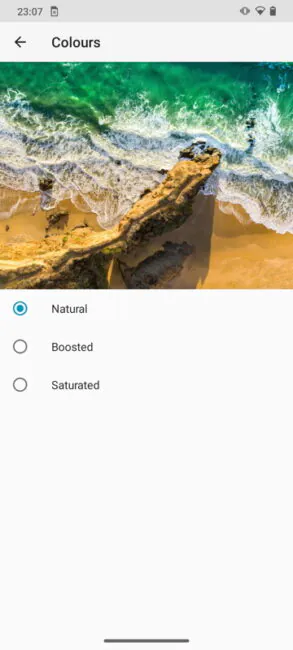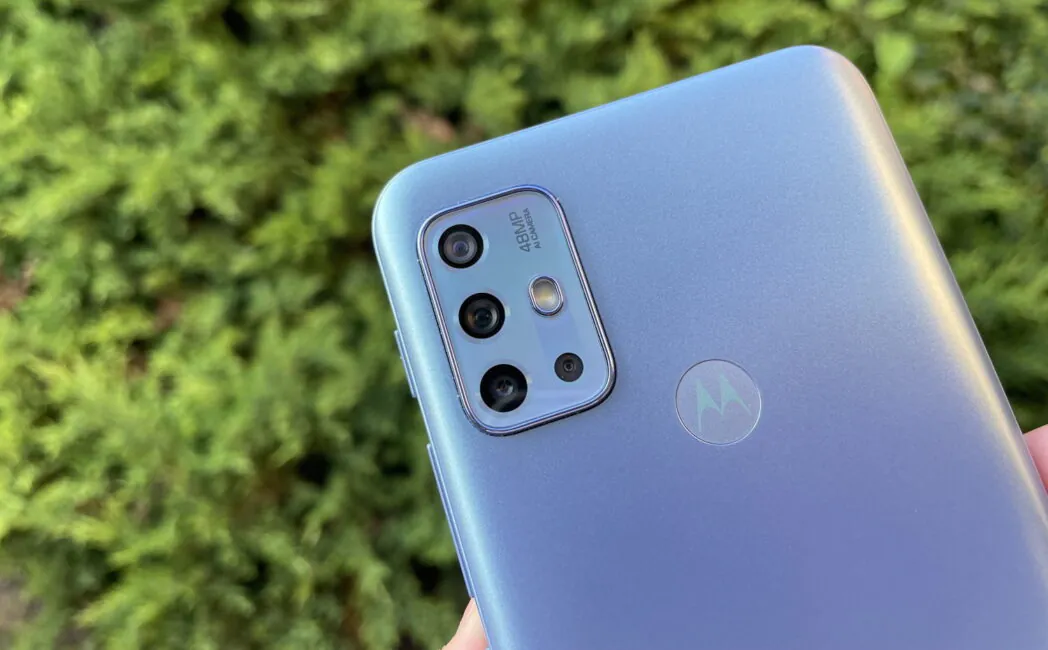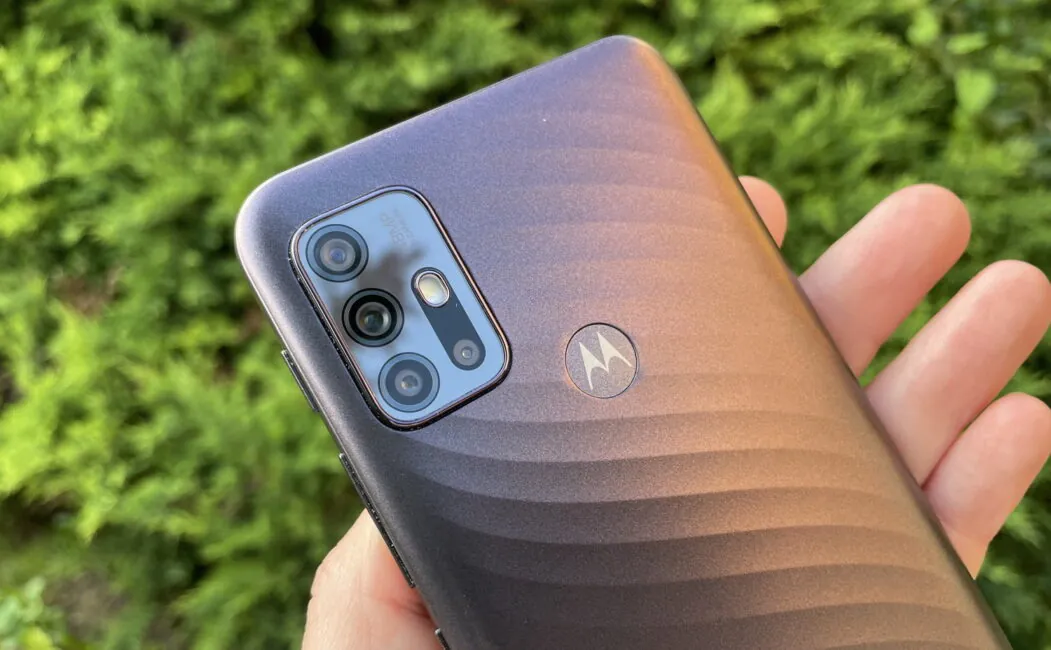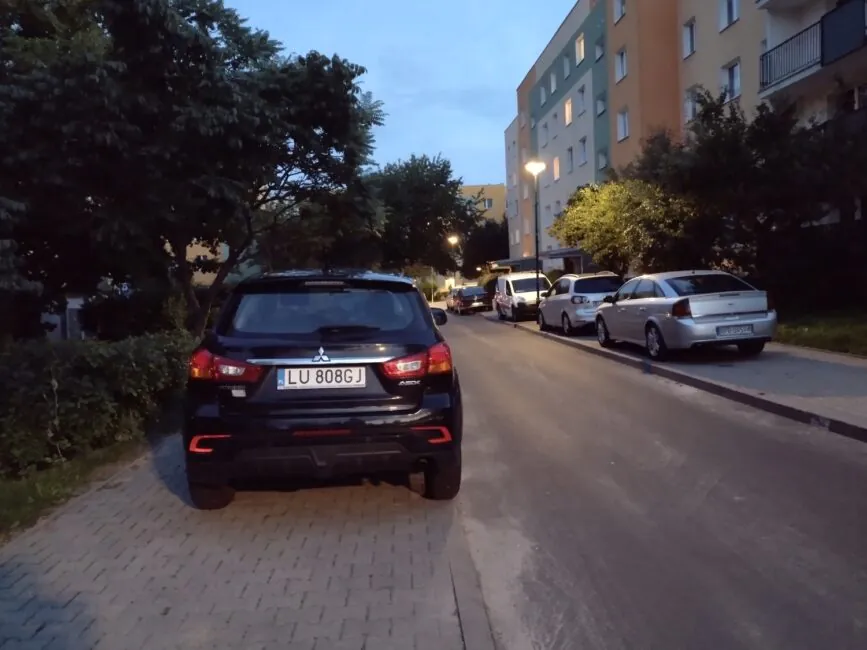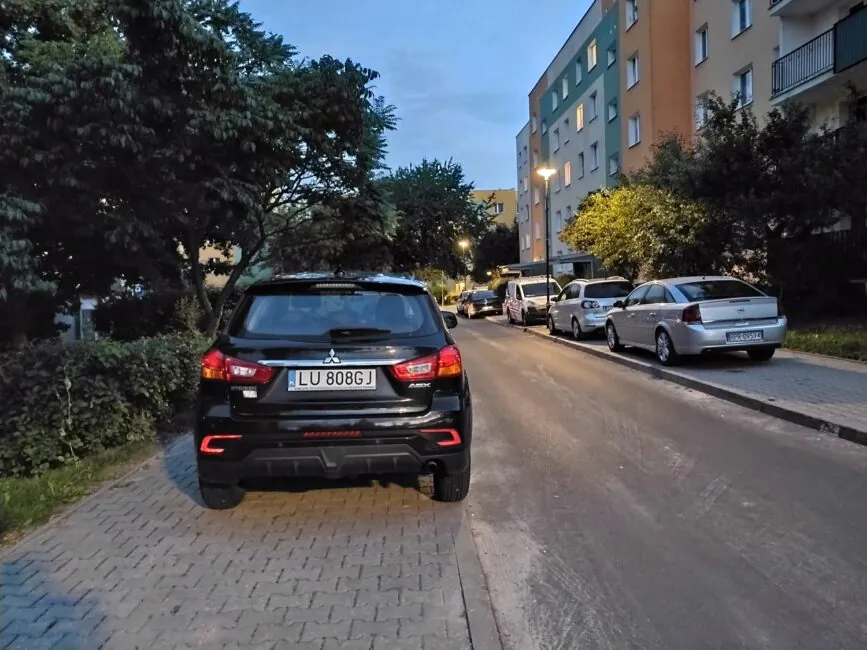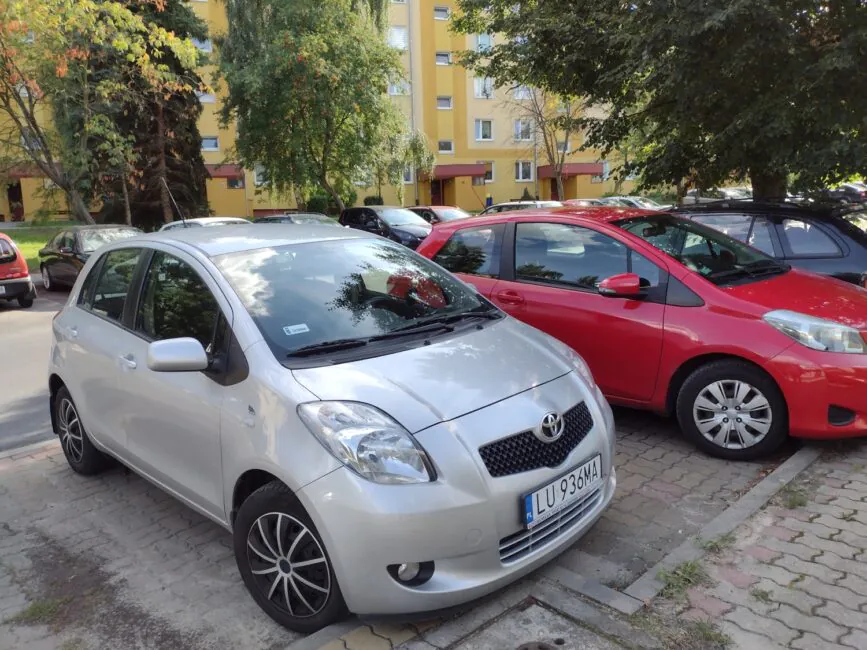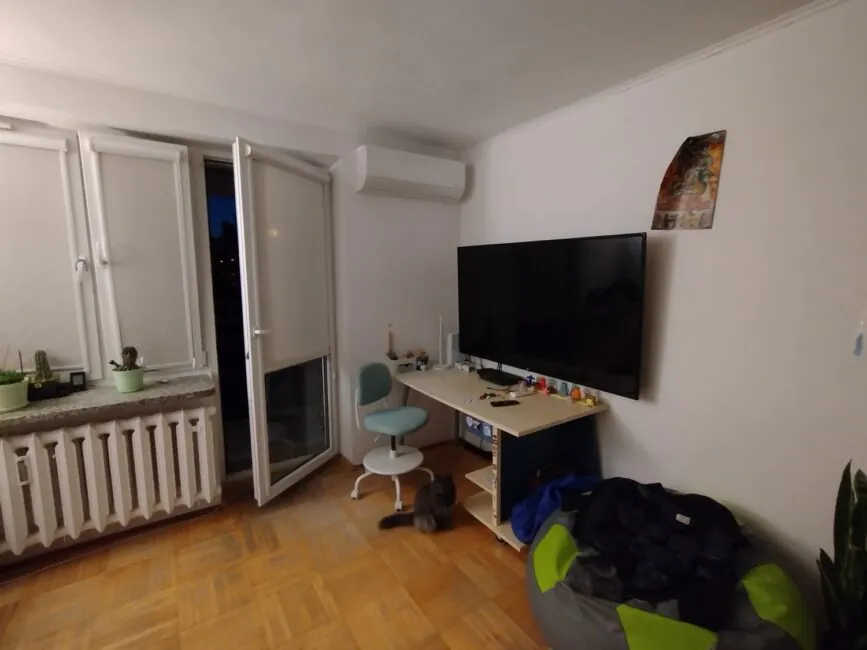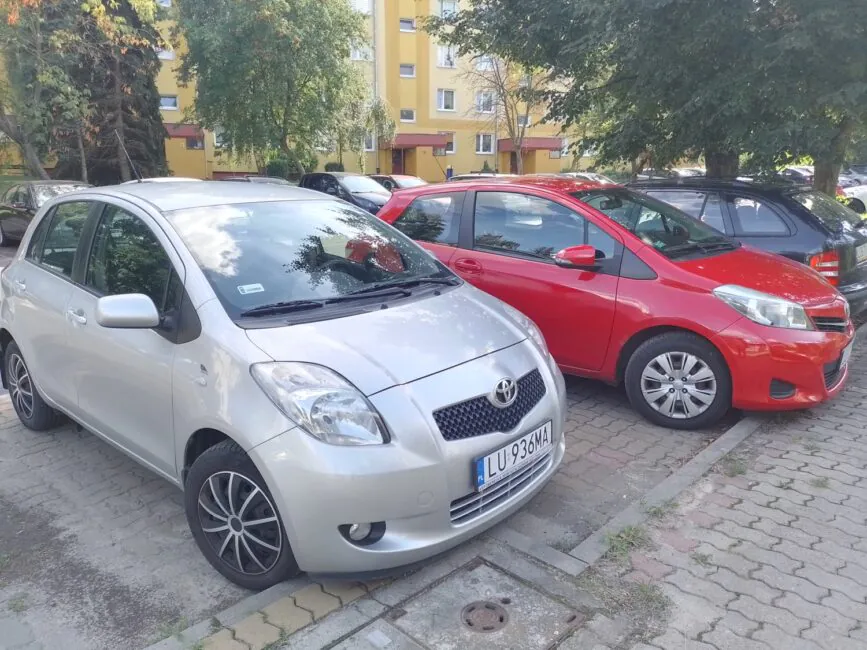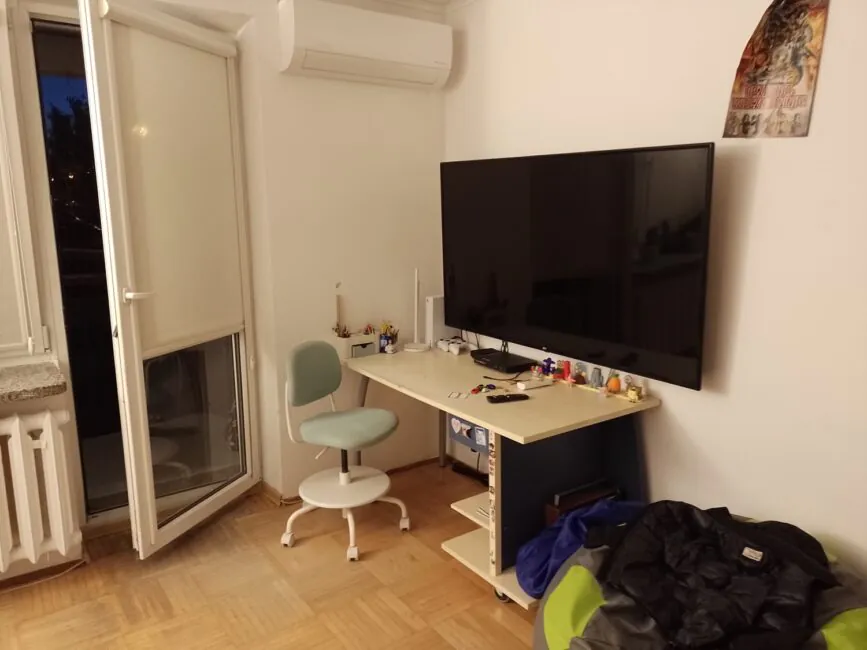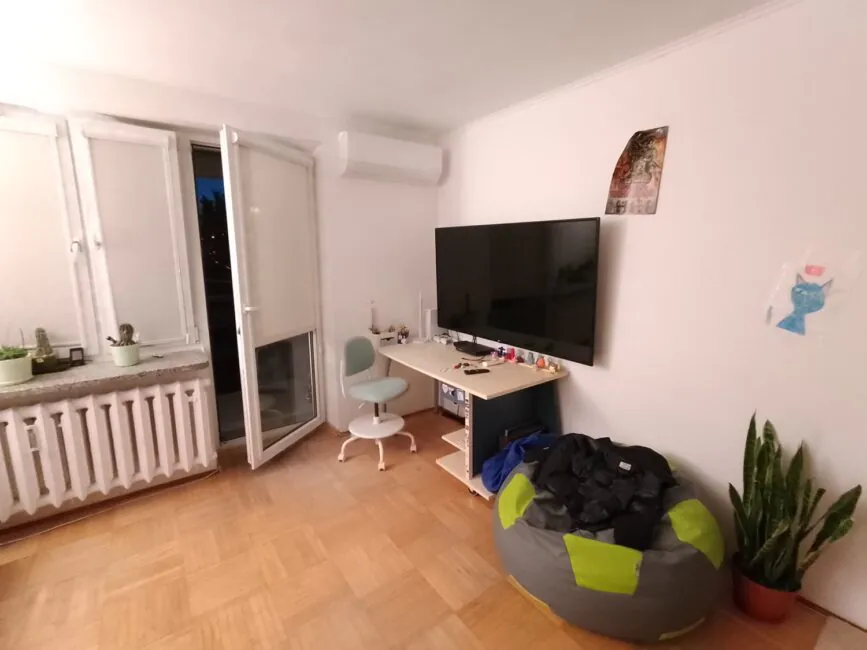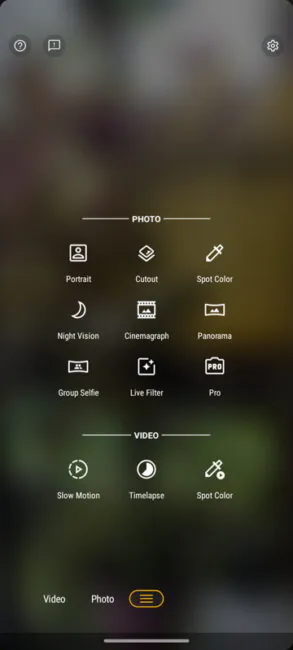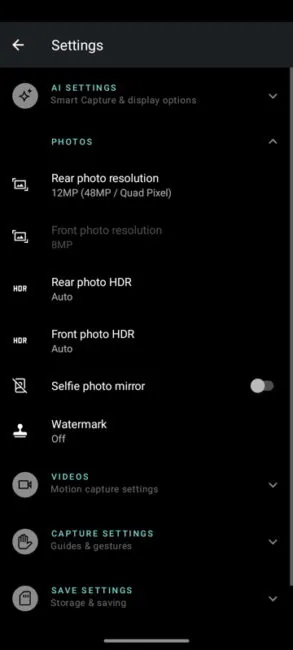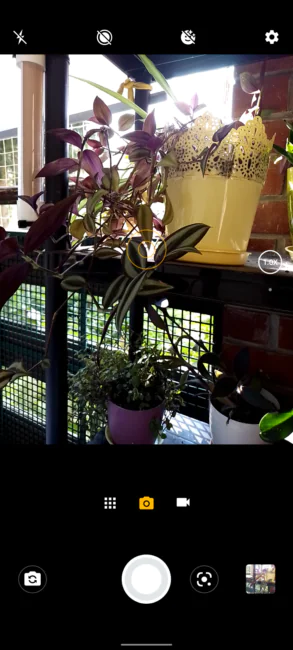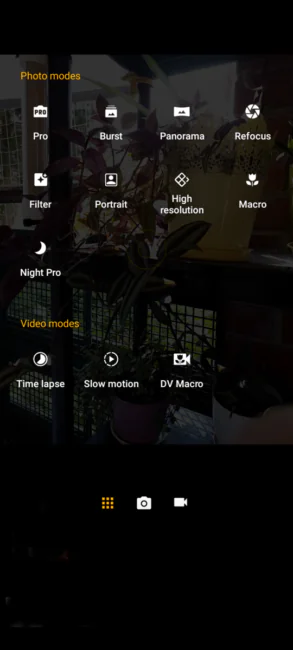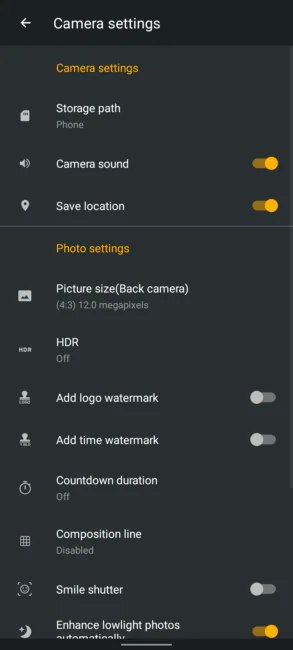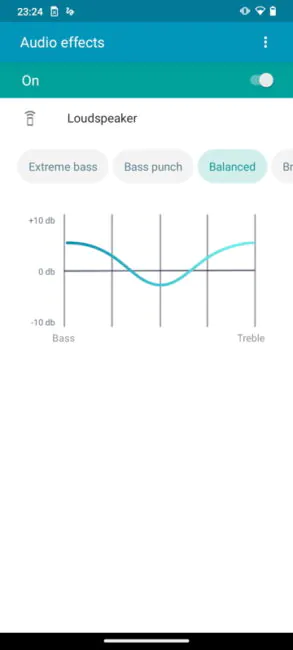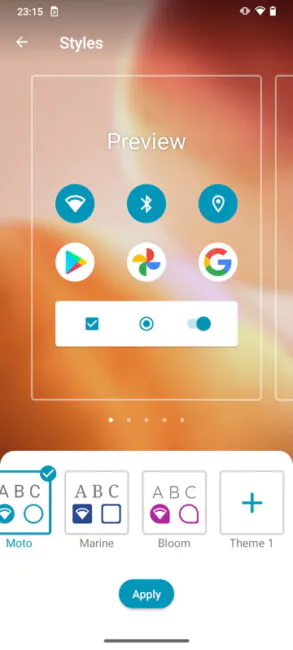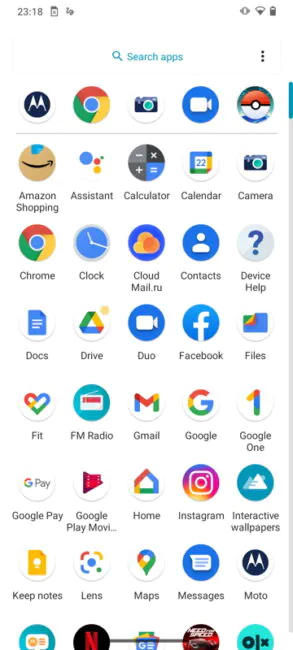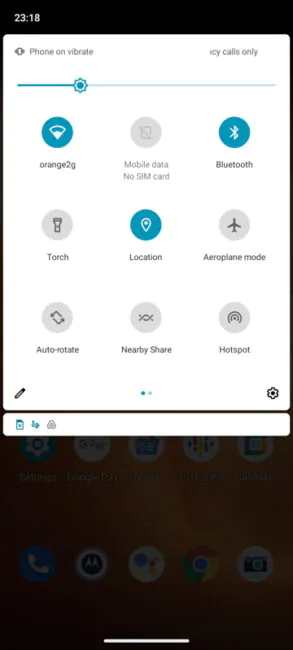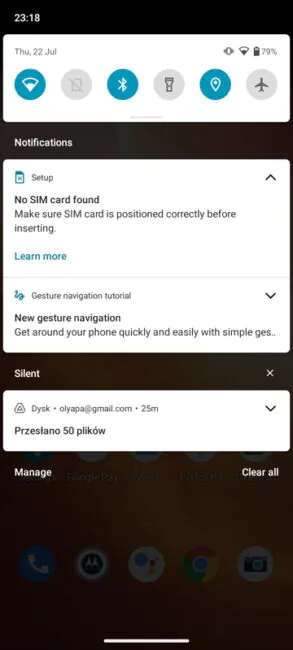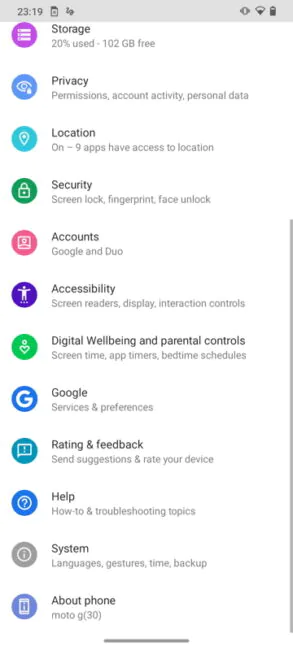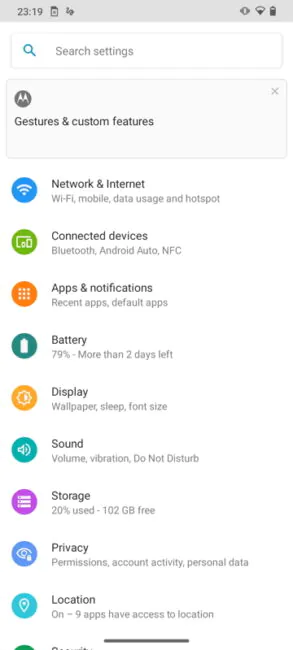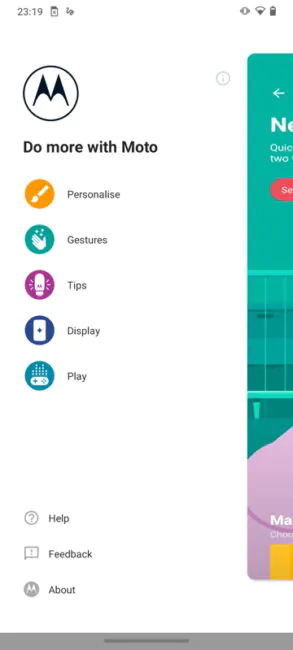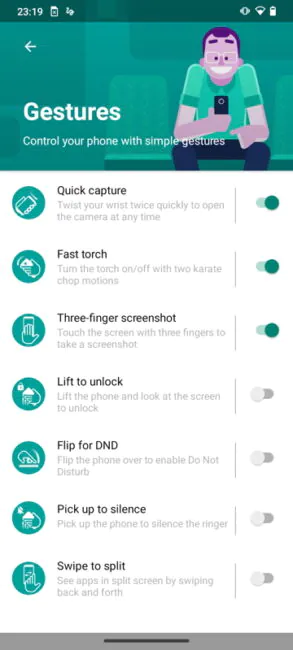© ROOT-NATION.com - Use of content is permitted with a backlink.
I already stated that the current G series from Motorola is a little confusing. There are too many models (Xiaomi has the same issue). For example, the G30 and the G50 are very similar, and the 30 is somewhat better than the 50, but the 50 is more expensive. The Moto G10 and G20 have a complicated history too. One would assume the G10 is cheaper and weaker, but the specs list is almost identical, including the camera set. The prices are almost the same. There are different processors: the G10 Snapdragon 460 and the G20 UNISOC Tiger T700 (chips for budget models, the former name is Spreadtrum). The G20 also stands out thanks to its 90 Hz screen.
In short, in order not to write the same thing twice, we asked for both models for the test at once. I will warn you right away that despite the similarity at first glance, there are differences, even in cameras and in operating speed. All details are in the review.
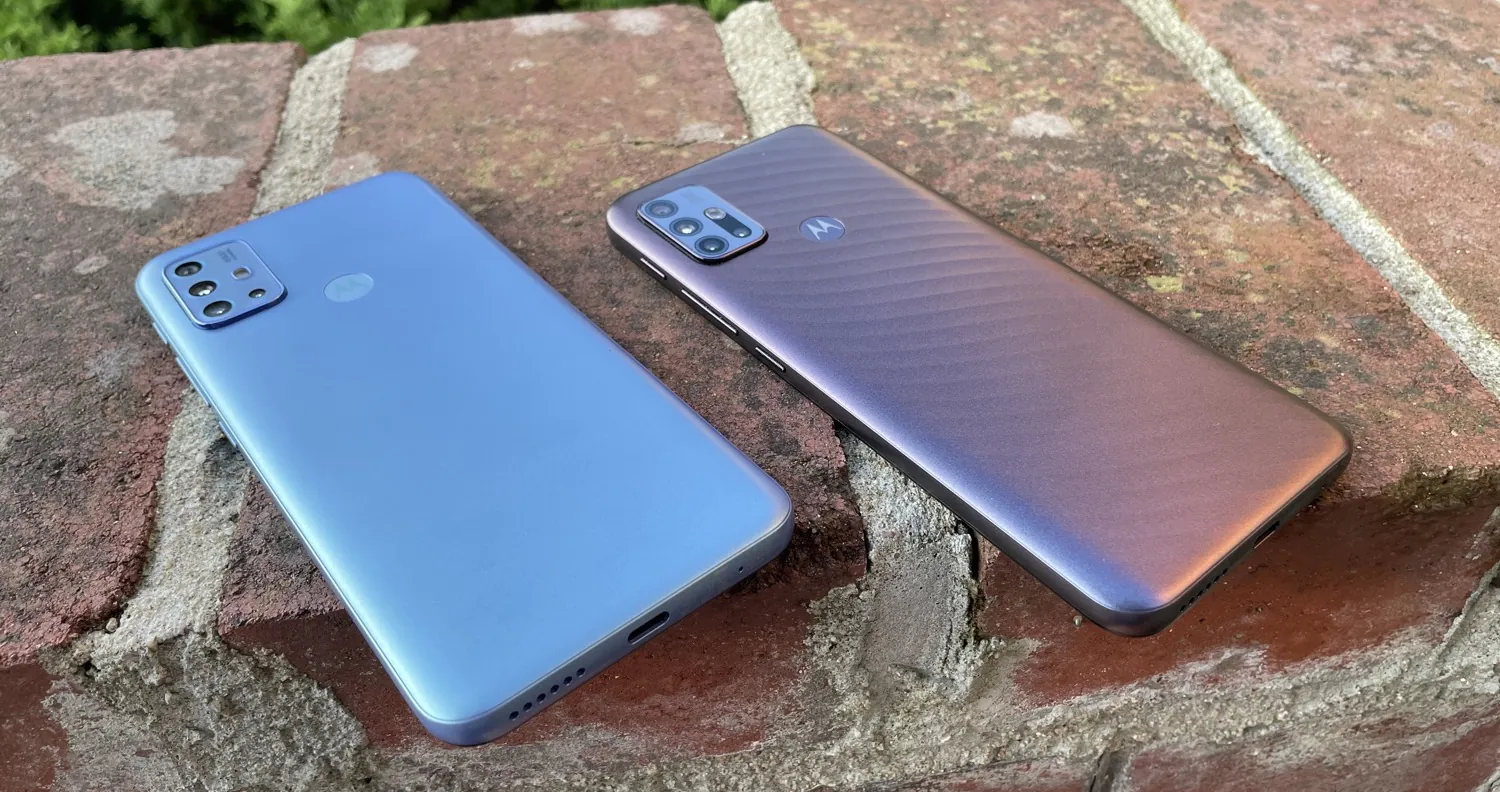
Full specifications for the Motorola Moto G10 и Moto G20
| Moto G10 | Moto G20 | |
| Screen | IPS, 6.5 inches, 20:9, 1600×720 resolution, 60 Hz | IPS, 6.5 inches, 20:9, resolution 1600×720, 90 Hz |
| Processor | Qualcomm Snapdragon 460 8 x 1.8 GHz, Cortex-A73 / 53 | UNISOC Tiger T700 8 x 1.8 GHz, Cortex-A75 / A55 |
| Video accelerator | Adreno 610 | Mali-G52 MP1 |
| Memory | 4 GB of RAM, 64 GB of ROM, combined microSD card slot up to 512 GB | 4GB RAM, 64/128GB ROM, combined microSD card slot up to 1 TB |
| Battery | 5000 mAh, 10 W charging | 5000 mAh, 10 W charging |
| Main camera | 48 MP, f/1.7, Quad Pixel technology + 8 MP wide-angle lens f/2.2, 118 ̊ + 2 MP macro lens f/2.4 + 2 MP depth sensor f/2.4 | 48 MP, f/1.7, Quad Pixel technology + 8 MP wide-angle lens f/2.2, 118 ̊ + 2 MP macro lens f/2.4 + 2 MP depth sensor f/1.4 |
| Front-facing camera | 8 MP f/2.2 | 13 MP f/2.2 |
| Communications | LTE, NFC, Wi-Fi 802.11 a/b/g/n/ac 2.4+5 GHz, Bluetooth 5.0, GPS (A-GPS), GLONASS, Galileo, USB Type-C, FM Radio | LTE, NFC, Wi-Fi 802.11 a/b/g/n/ac 2.4+5 GHz, Bluetooth 5.0, GPS (A-GPS), GLONASS, Galileo, USB Type-C, FM Radio |
| OS | Android 11 | Android 11 |
| Dimensions and weight | 165.2×75.7×9.2 mm, 200 g | 165.2×75.7×9.0 mm, 200 g |
| Price | About $165 | About $175 |
As you can see, there are few differences – the processor, the resolution of the front-facing camera, the refresh rate of the screen, the memory, everything else is identical.
Read also:
- Motorola Moto G50 review: Extremely Affordable 5G Smartphone
- Moto G100 Review: Not a Computer, But It’s Close
What’s in the box
There are no differences. The boxes contain 10-watt chargers, USB to Type-C cables, SIM eject tools, documentation and silicone cases.
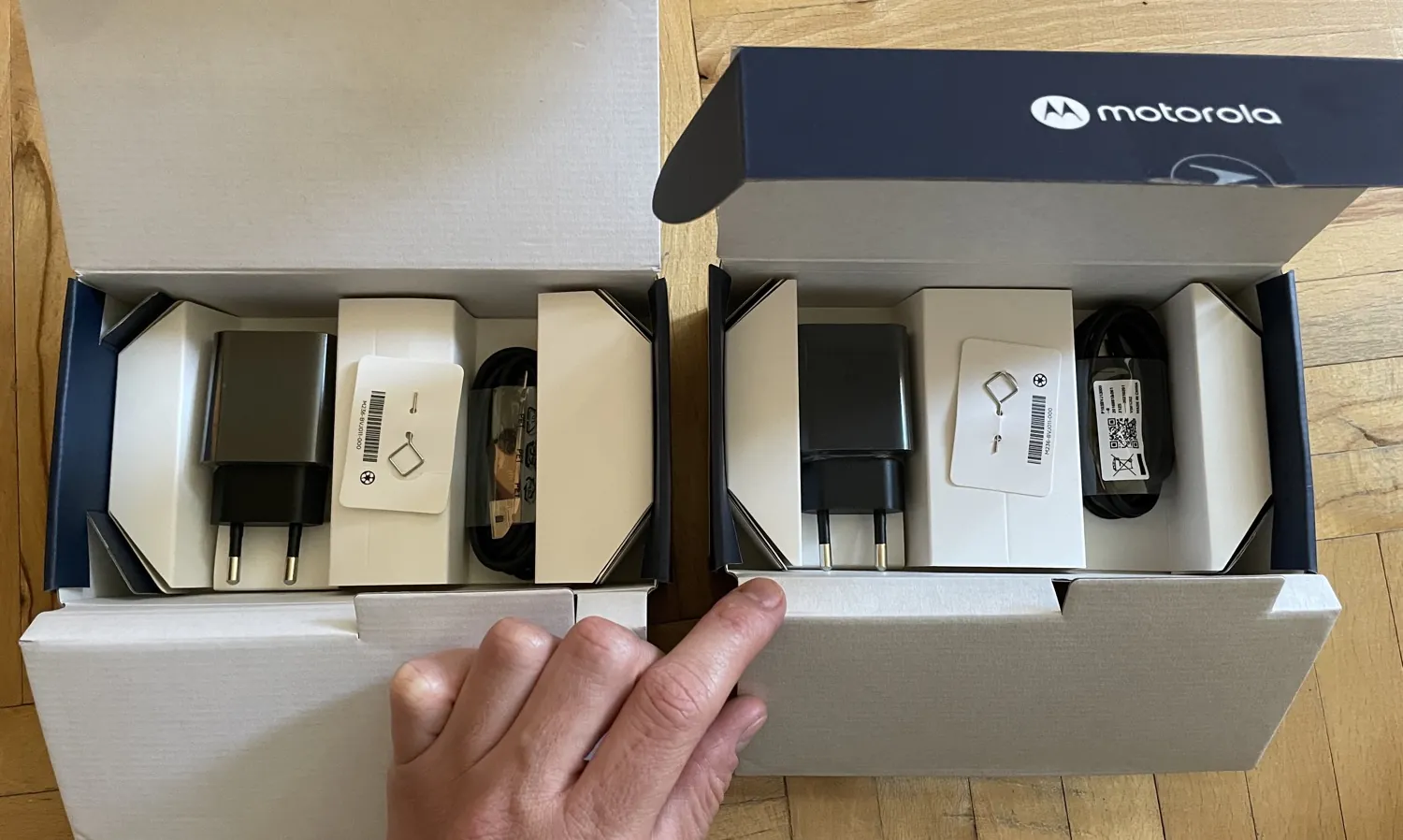
The dimensions of the Moto G10 and the Moto G20 are about the same, so the cases fit each phone.
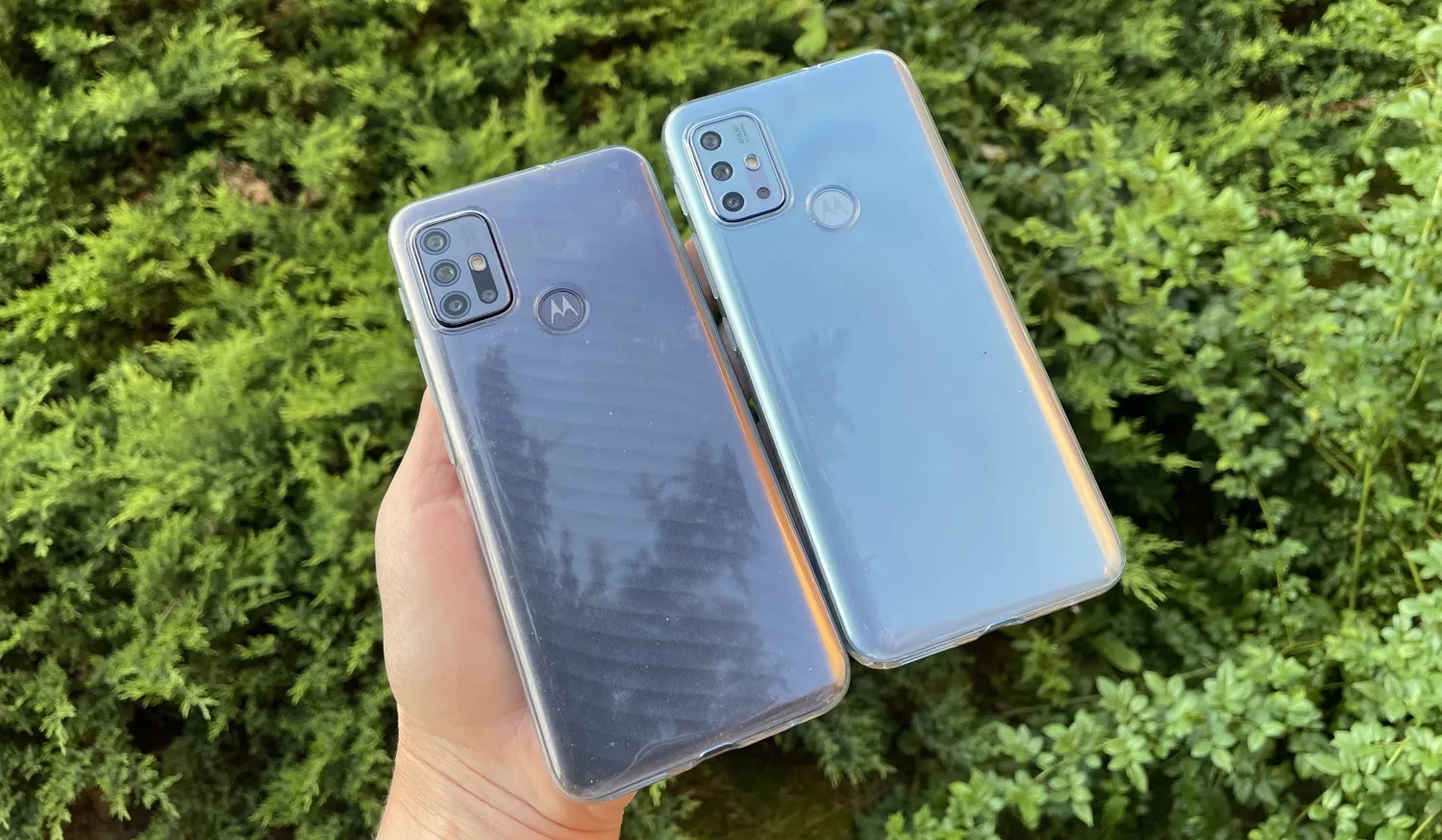
The cases are the simplest there are: they are thin, with minimal bumpers above the screen.
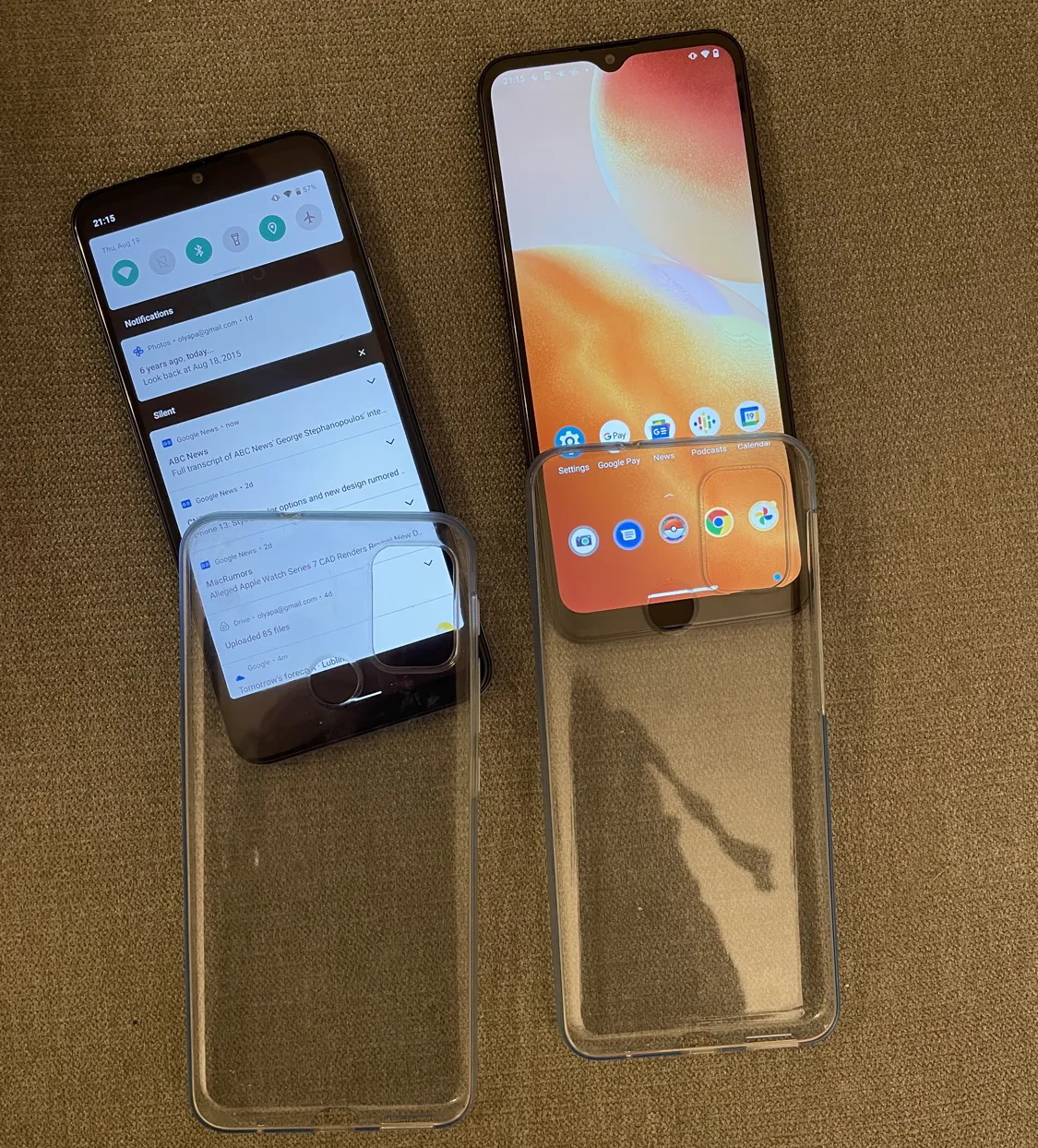
Bottom line: the phones are similar.
Moto G10 and G20: Designs
The phones are twins apart from the colors of the back panel. Even the dimensions are identical, safe for 0.2 mm in thickness. So first, I’ll describe what the Moto G10 and the G20 have in common. The format is convenient, the screens are long and relatively narrow. You can use them with only one hand, and a lot of information fits on this screen.
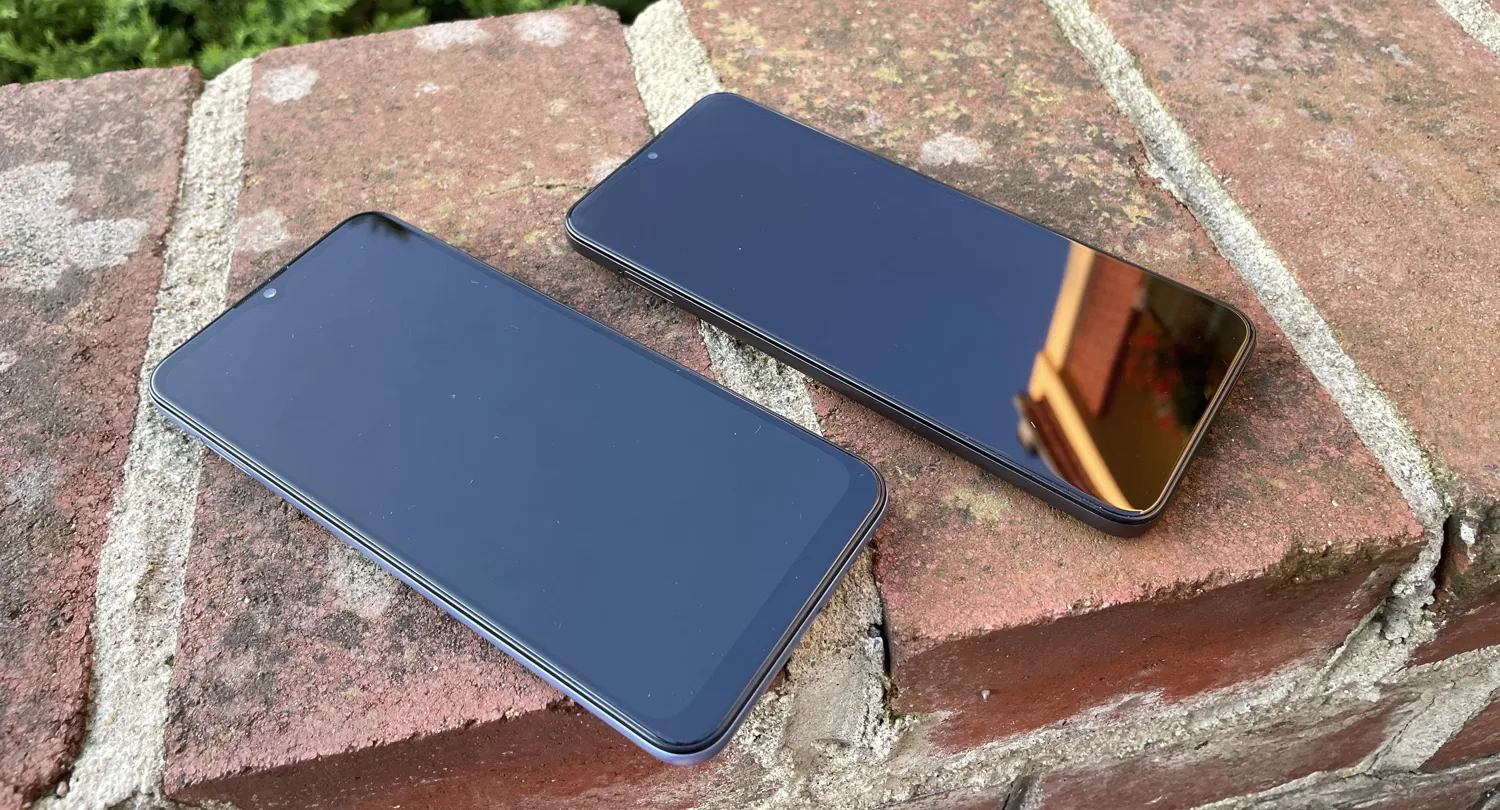
Of course, the models cannot aren’t compact in any way, but they are not huge either. Smartphones weigh 200 g, in some way thanks to 5000 mAh batteries.
The bezels are standard for the budget segment, not too narrow. Below you’ll find the usual “chin”. Drop-shaped notches for front-facing cameras are outdated by this point, but acceptable for inexpensive models.
Finger scanners are also old-fashioned, on the back panel. The location is convenient. The sensors aren’t too quick, but again, adequate for the budget price range.
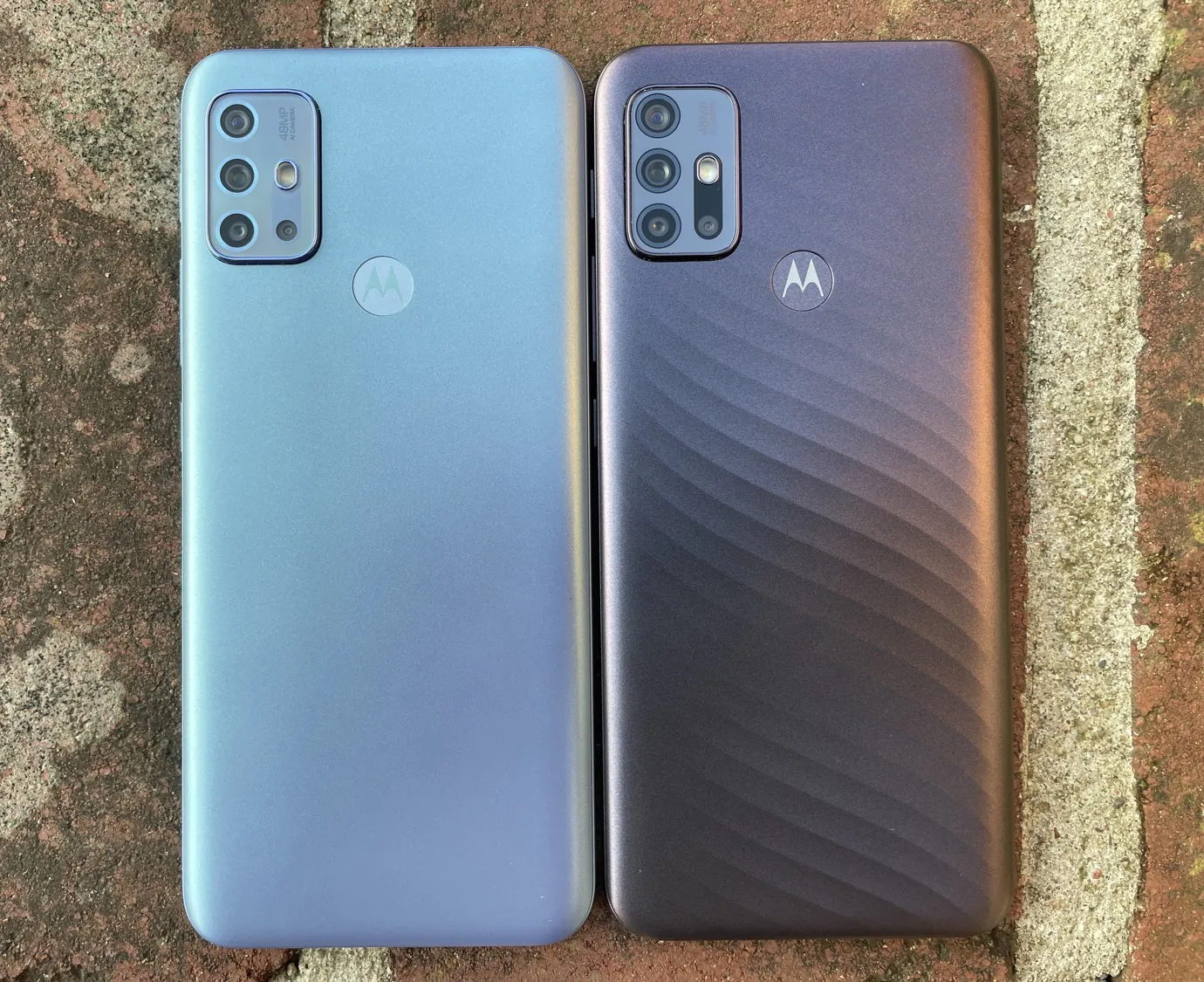
The cases are completely plastic. Screens do not have a protective film out of the box, but, at first glance, they are not particularly prone to scratches. Fingerprints are not very visible and can be easily removed.
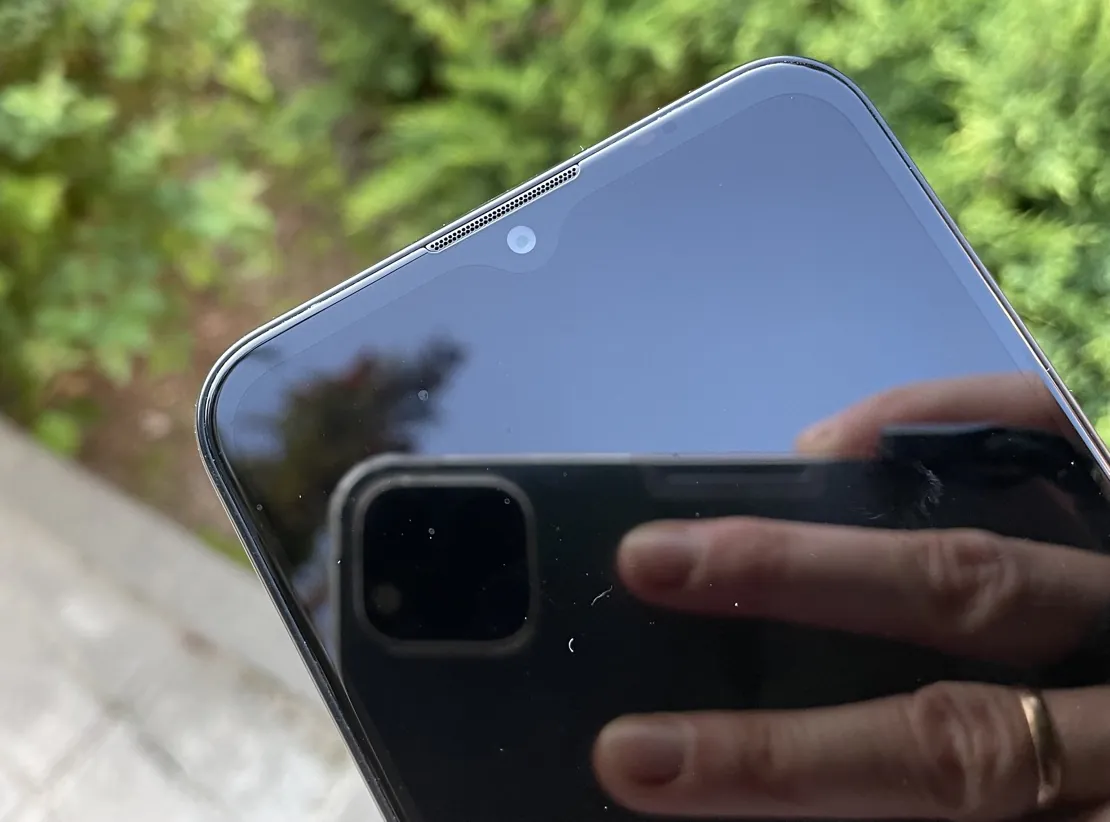
All keys are located on one (right) side. I’m used to the fact that the volume buttons are usually on the left and at first I was confused. But you get used to it.
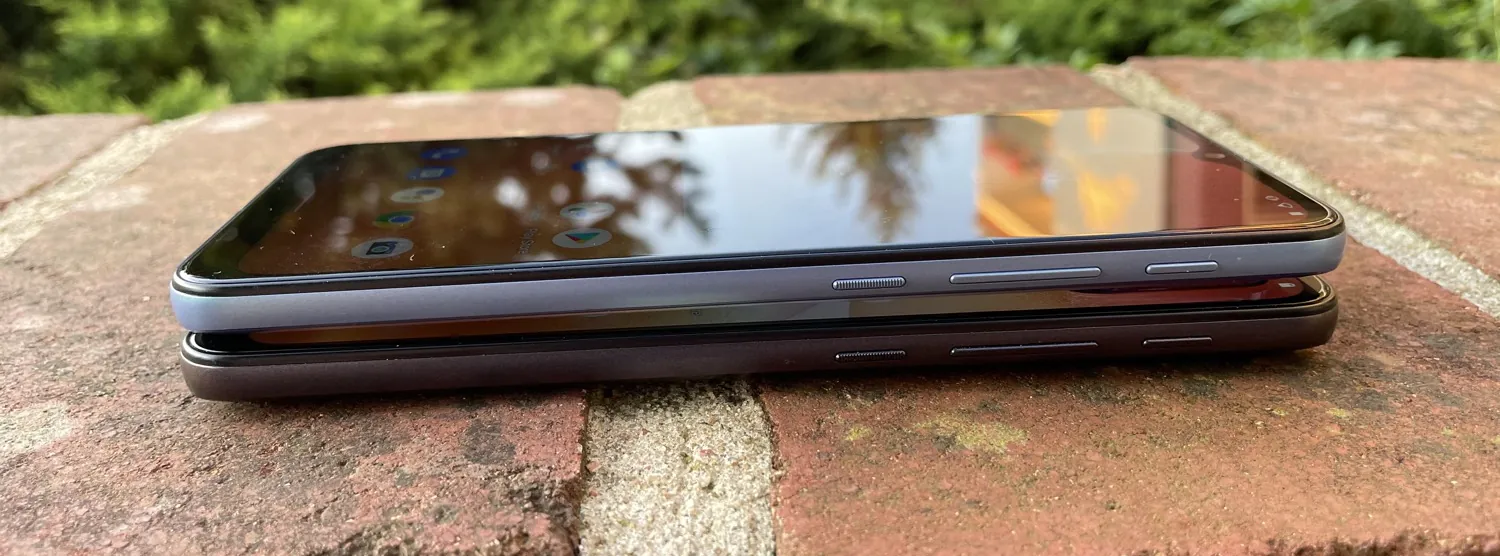
Above the long volume rocker is a separate Google Assistant call key (you cannot reassign it, but you can disable it in the settings), and below it is a power/lock button with a ribbed surface.
On the left side there is a slot for SIM-cards and memory cards.
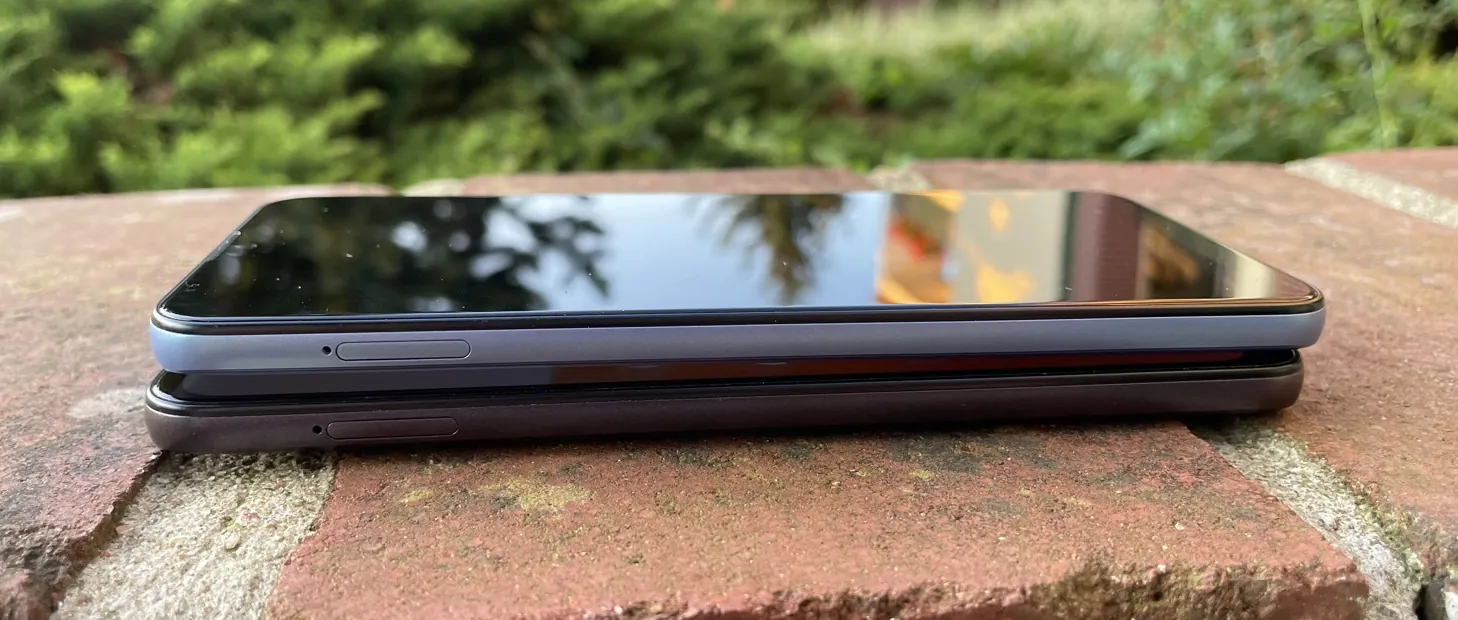
At the top there is a 3.5 mm headphone output. Most smartphones have a mini-jack, if any, at the bottom. But this is again a matter of habit. And who needs wired headphones when good wireless ones cost 20-30 bucks?
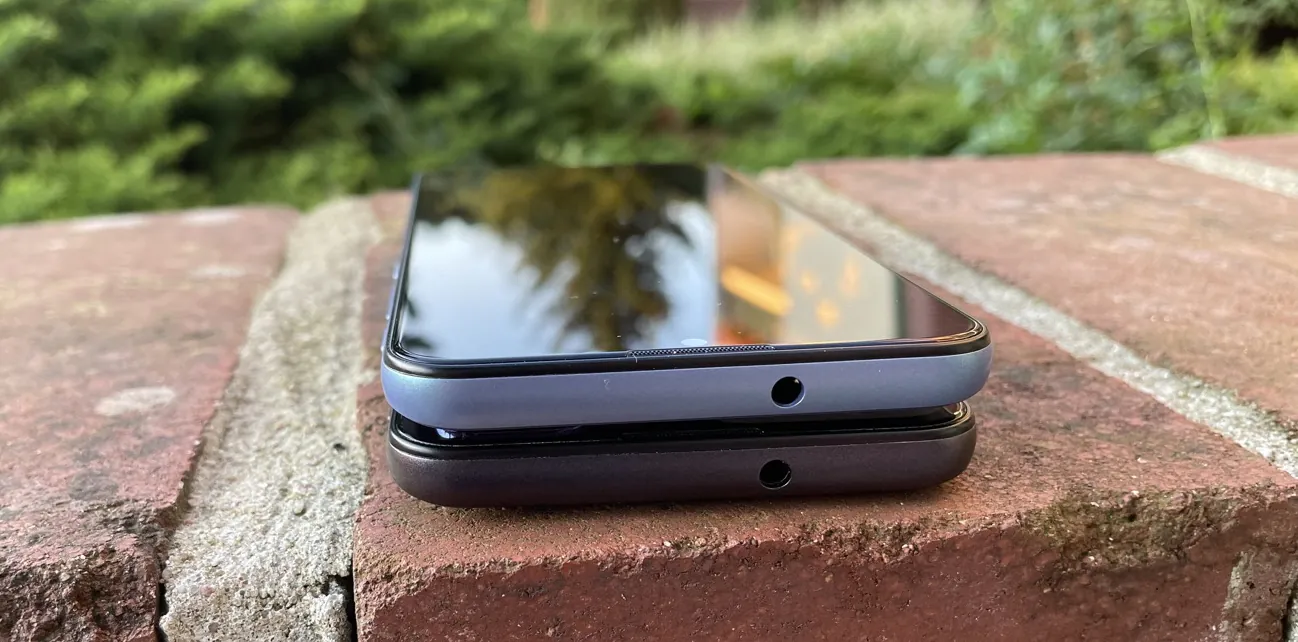 At the bottom there is a monaural speaker, microphone, and a Type-C charging connector.
At the bottom there is a monaural speaker, microphone, and a Type-C charging connector.
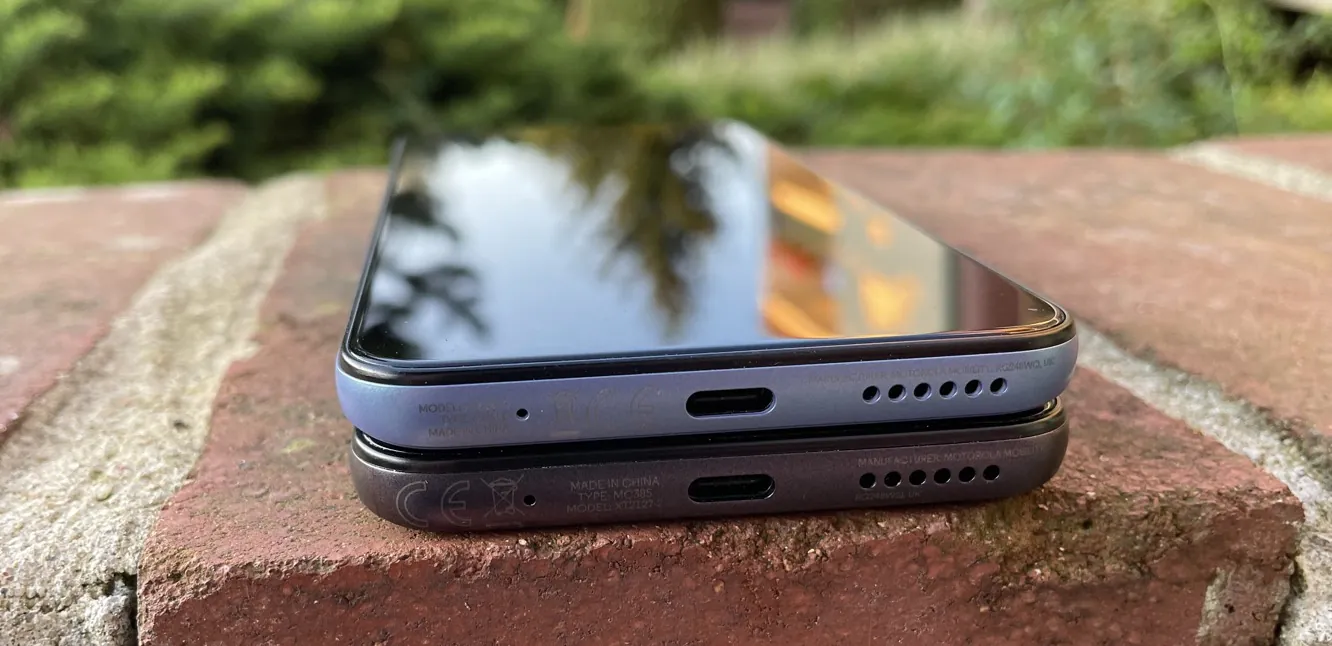
The build of the Moto G10 and G20 is good. It is also worth noting the hydrophobic shell (IP52), which is common for the entire current G-series. A trifle, but nice, especially in this price segment.
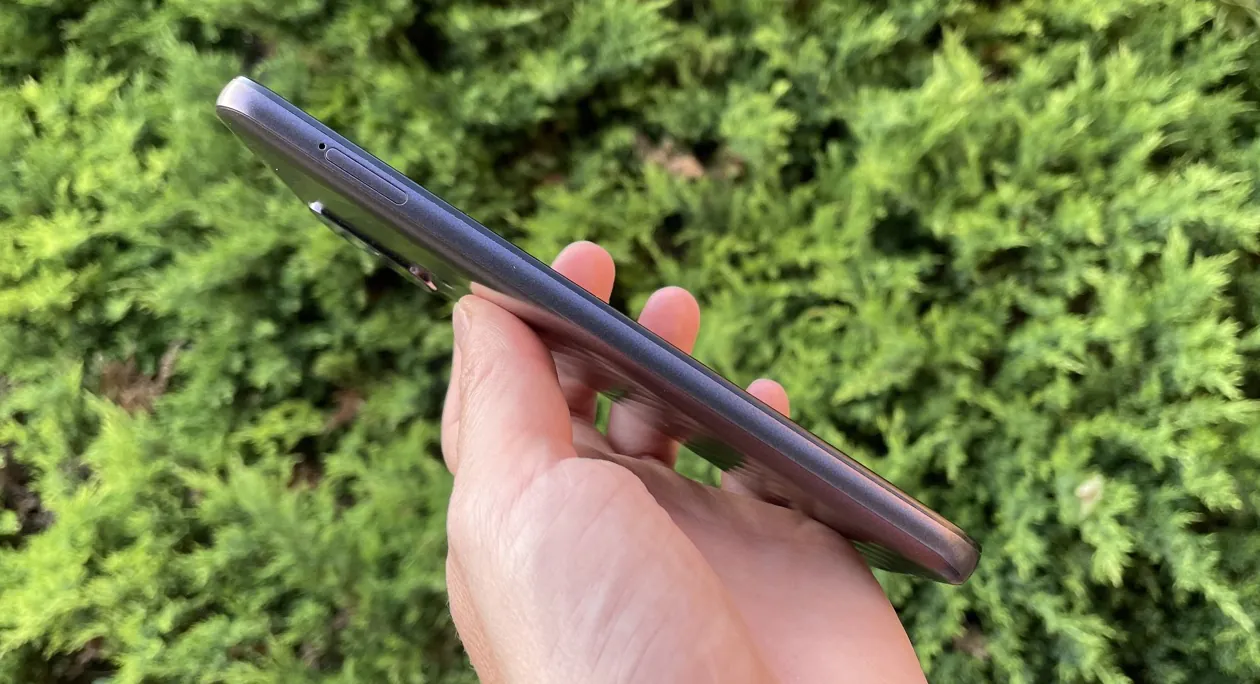
Now for the differences. The G20 has a nice matte case, which shimmers light blue and then purple. Fingerprints are not visible on it, it is also not very prone to scratches.
In addition to blue, there is also a cool bright crimson version.
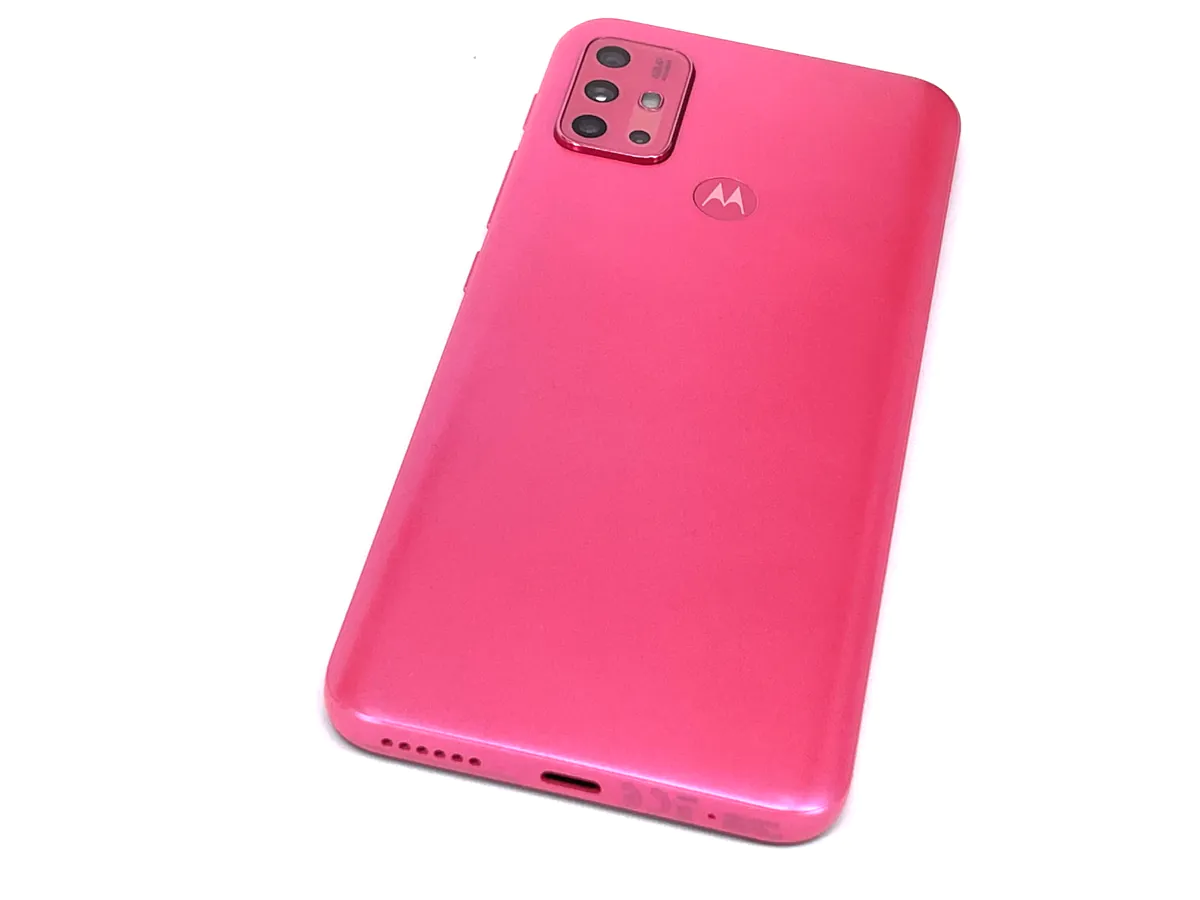
The Moto G10 has a back panel, also matte, with a kind of a wavy design. Moreover, this is not a visual effect, the wave is real, it is pleasant to slide your finger over it.
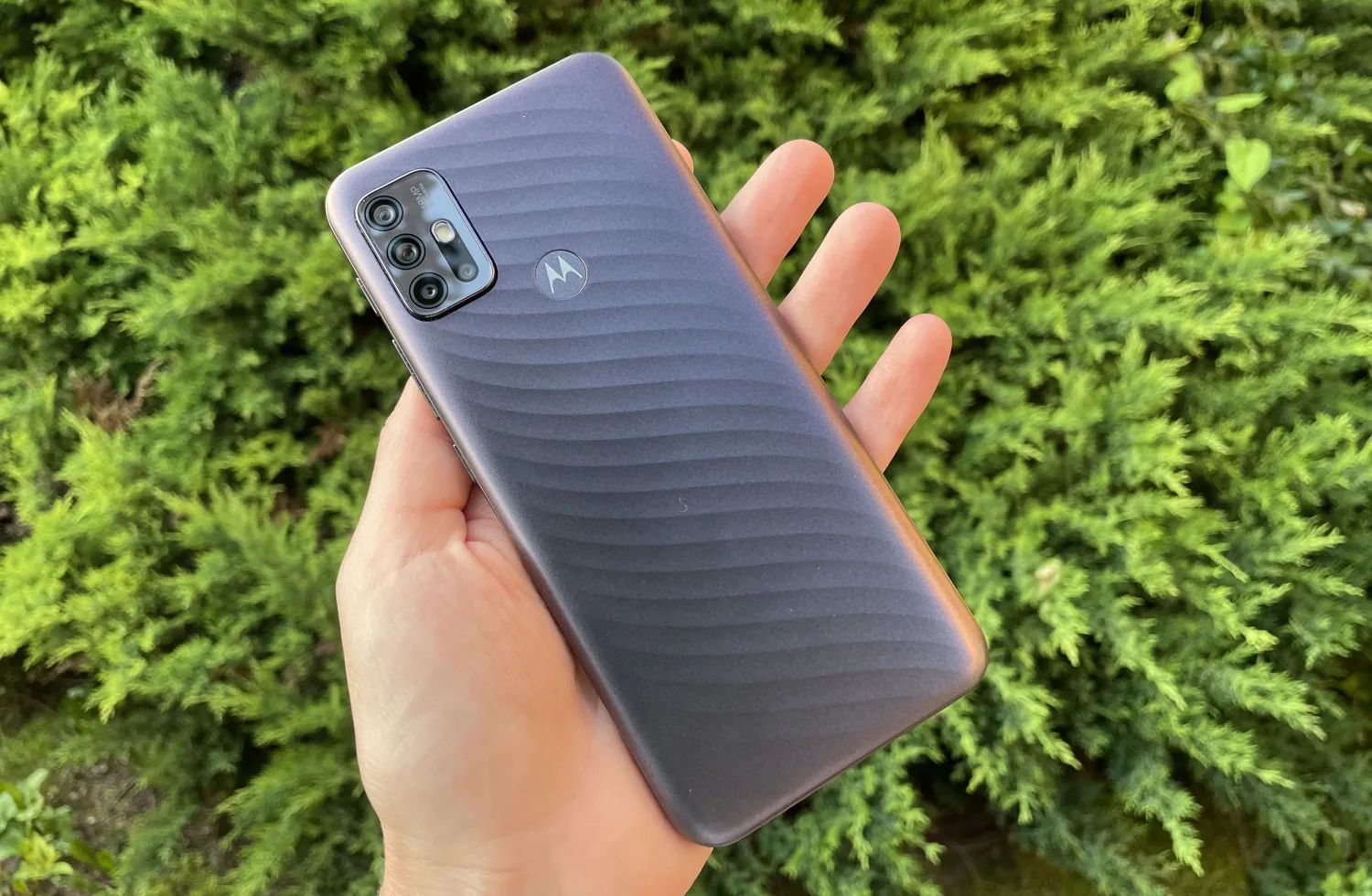
There are also two colors – pink-purple and dark purple. Both shine beautifully in the light.

Personally, I like both options. Only, of course, a spectacular wave is of little use if the smartphone is in a case – you barely see and do not feel it.
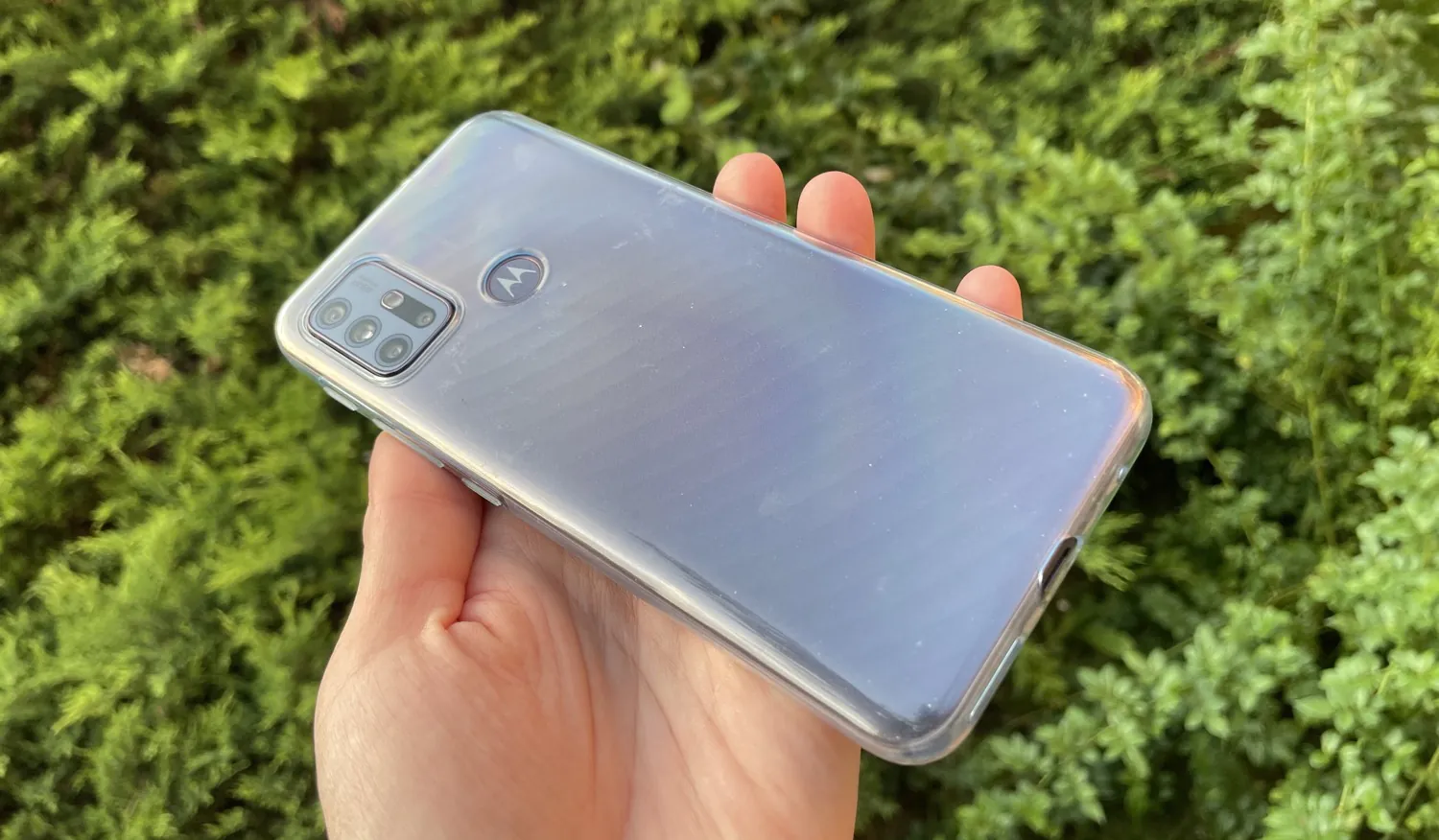
Bottom line: everything is the same, but the G10 has an unusual wavy pattern on the back.
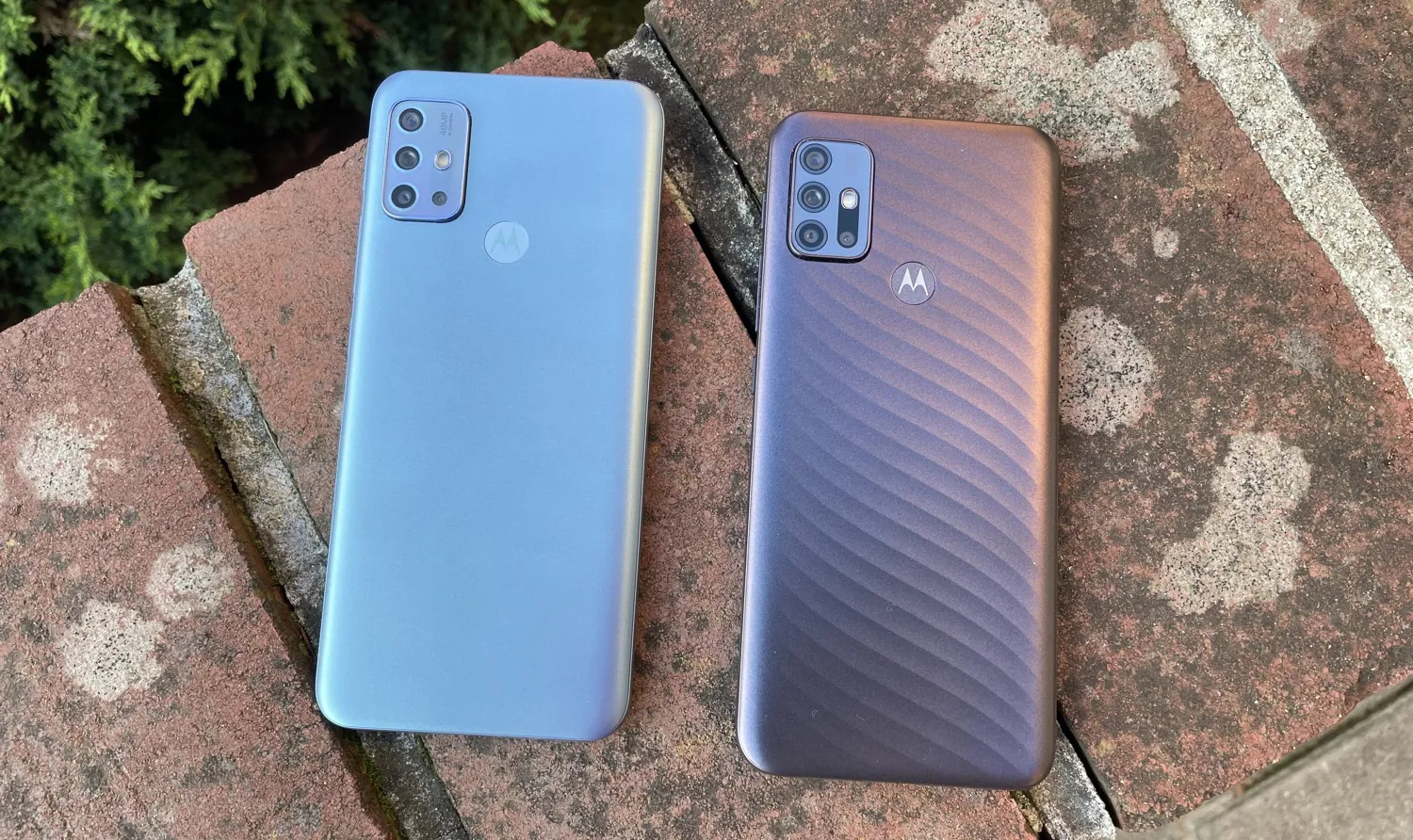
Read also: Realme 8 vs Redmi Note 10S: Budget smartphones head-to-head
Moto G10 and G20: Screens
The displays of the Moto G10 and G20 are generally as good as those of the entire G series. 6.5-inch screen, 20:9 aspect ratio. The resolution, of course, is only 1600×720 pixels, but the graininess is not striking. IPS matrix is high quality considering the price category of the device. The shades are pleasant, the viewing angles are nice, the brightness and contrast are sufficient. The color reproduction of the Moto G10 and G20 is different, but only slightly.
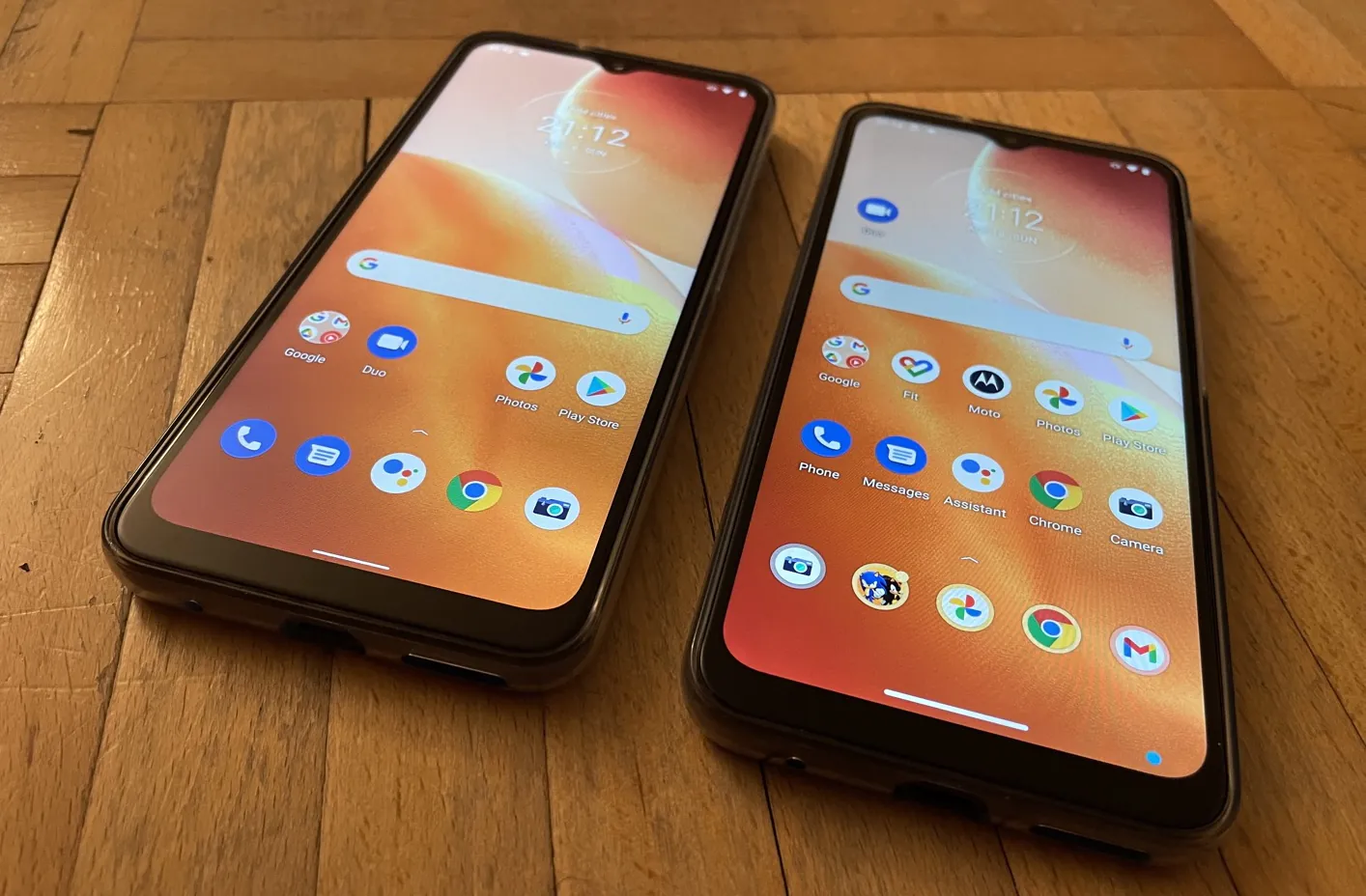
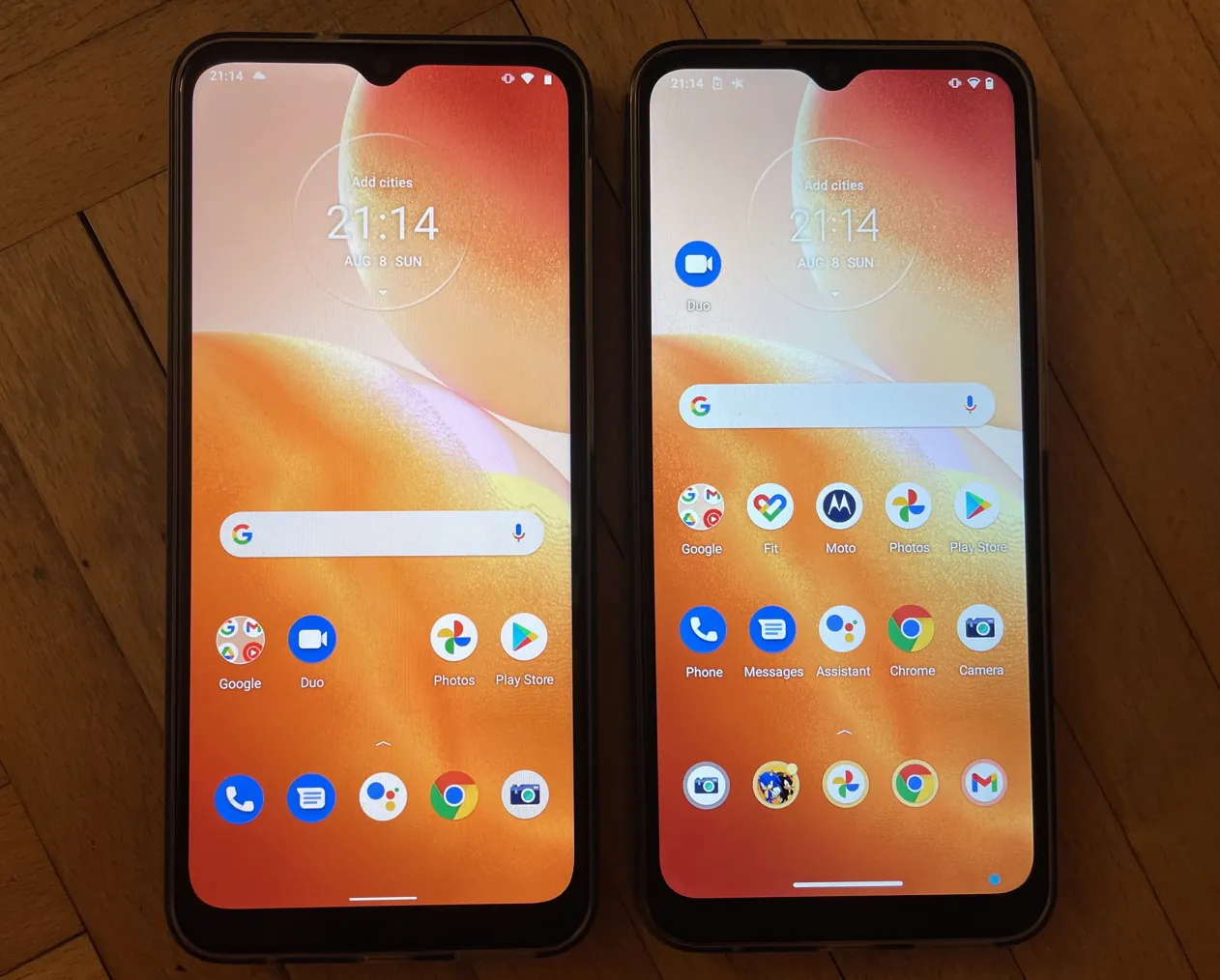
Automatic brightness works without misfires. There is an option for adjusting the color temperature, as well as three options for the saturation. In the sun, the screens of both models fade, as the maximum brightness level is weak, but they remain more or less readable.
There is a setting in the menu so that apps are displayed in full screen, without a black bar in the upper part.

Now about the main difference – the G10 has a standard screen with 60 Hz refresh, while the G20 received the usual 90 Hz for other models of the Moto G series. For an inexpensive phone it’s definitely a plus. Three operating modes are available: automatic (depending on the current app and charge level), 60 Hz or 90 Hz.
I wanted to record a video comparison, but couldn’t get the camera settings right, so the difference is not visible on the video. You can watch comparisons in slow motion on YouTube, here’s a good one, with Samsung, but the principle is the same.

There is a difference when you launch apps, or scroll through the menu. One device seems smoother, the other (G10) is more twitchy, although the reason is not the processor or memory, but in the frequency of the screen.
But in general, I would not say that an increased screen refresh rate is necessary in the budget price range. This is not to say that working with the G10 is particularly annoying.
Bottom line: Everything is the same, but the G20 has a 90Hz screen refresh, so the image is smoother.
Read also: Realme GT review: Track-Worthy Smartphone for the Masses
Moto G10 и G20: Hardware and performance
Here we have a fundamental difference. The G10 has a Qualcomm Snapdragon 460 (11 nm, 8 cores at 1.8 GHz, Cortex-A73/53) from the beginning of 2020, and the G20 has a fresh UNISOC Tiger T700 (12 nm, 8 cores at 1.8 GHz, Cortex -A75/A55).
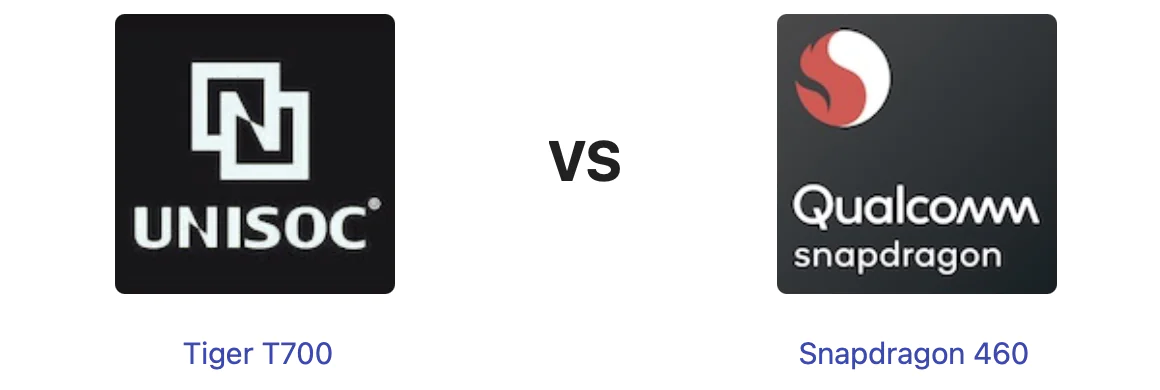
The UNISOC Tiger T700 was released later, gaining more “parrots” in benchmarks (about 185,000 in AnTuTu 8 versus 144,000 in Snapdragon 460). The frequency of the integrated graphics accelerator is higher.
Parrots are parrots, however, in practice, developers adapt software and games for the more popular Snapdragon, and rare processors are having harder time. And there are moments in which the brainchild of Qualcomm, albeit a budget one, wins due to a more successful architecture.
In practice, the higher power of the Chinese UNISOC Tiger T700 is noticeable in normal operation. I recorded videos where I simultaneously launched applications, games, and went through the menu. The G20 is a bit faster. This is especially noticeable in games.


Anyways, the G10 is not slow and the G20 is very fast. No, they are both relatively slow when compared to more expensive devices. But for their price category they have adequate performance. In basic tasks, an acceptable speed of work, in resource-demanding games, there are certain slow-downs. At the same time, I personally did not notice any moments where UNISOC lagged behind.
What is also important to note here is that the Tiger T700 heats up more and is less energy efficient than the Snapdragon 460.
With regards to memory, both models received 4 GB of RAM. The G10 only has 64GB of storage, while the G20 comes in two versions. Moreover, only the 4/128 GB model is presented on some European markets. Both smartphones support memory cards (the slot is combined, that is, you can use either two SIMs, or a SIM and a memory card), but the G20 has a larger maximum capacity, up to 1 TB.
Bottom line: the G20 has a more powerful Chinese processor and more storage.
Read also: realme 8 Pro vs Redmi Note 10 Pro — Mid-range smartphones head-to-head
Cameras
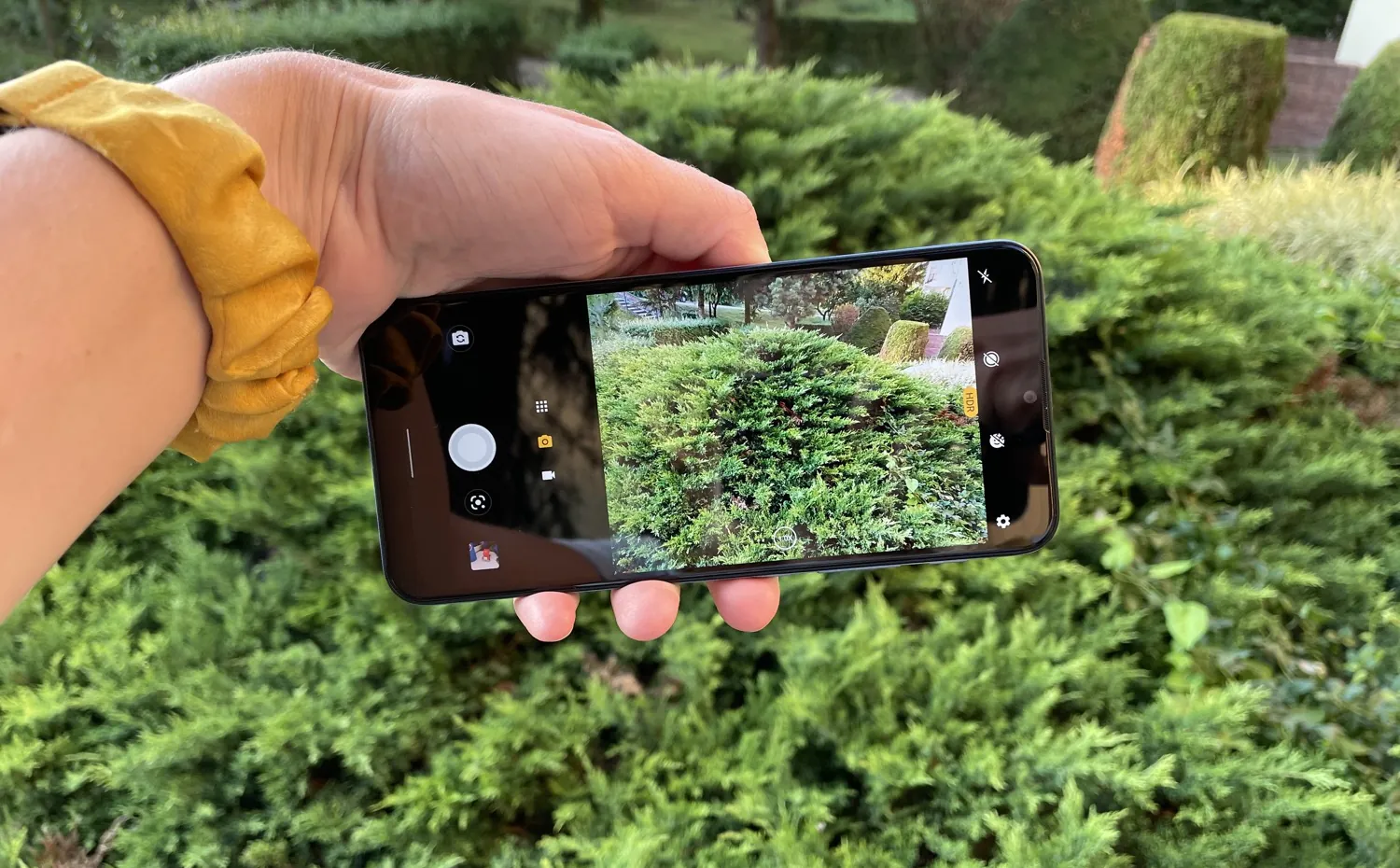
Not everything is clear here. On paper, the main modules are identical down to the number:
- 48 MP, f/1.7 main module, Quad Pixel technology
- 8 MP f/2.2 wide-angle lens, 118˚
- 2 MP macro lens, f/2.4
- 2 MP f/2.4 depth sensor
In terms of design, the G10 seems to have a larger lens. But, perhaps, this is only a visual effect due to a slightly different edging.
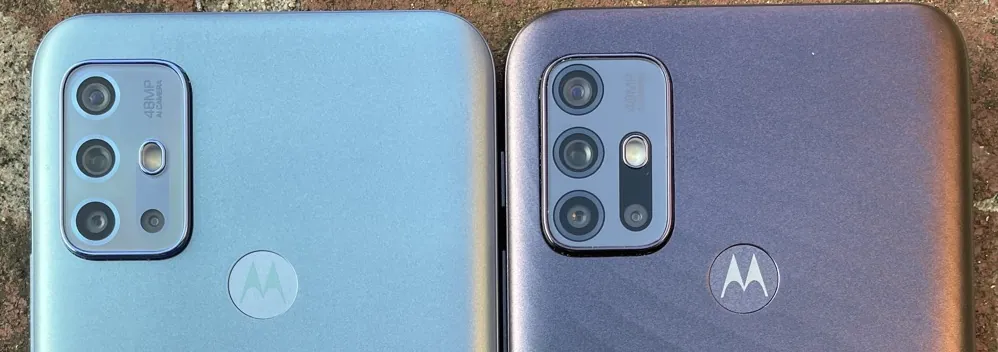
Most likely the matter is in the software “tuning”, but the photos from the G20 are often clearer and brighter. And if in excellent lighting from both models it is still possible to get pictures acceptable for social networks, then the weaker the lighting, the worse they look. On the street, the story is similar.
The examples of photos, on the left is the G10, on the right is the G20:
All photos and videos taken during the test:
In low light, the G10’s night mode helps a lot (Motorola traditionally is good at it). Here is a comparison – a photo in normal mode on the left and in night mode on the right.
But the G20 captures more light, so in my experience it doesn’t really need a night mode – it doesn’t make a huge difference anyway. Examples:
Curiously, in the Moto G10 and the G20 the night mode is quite weak, in other Moto the photos are often too artificial-looking.
Due to the use of Quad Pixel technology, photos are taken in 12 megapixel resolution by default. If desired, shooting is also available in “native” 48 megapixels, but in this mode the process takes more time, and in my opinion there is not much difference in clarity.
The wide-angle lenses of the Moto G10 and G20 generally do their job well. Yes, they distort the edges of the photo, have poor color rendition, and in the dark it is better not to even try to make photos. But in general, if you need to photograph a room or something large and there is no way to move away, then the lens will cope with its task. Its resolution is 8 megapixels, but the photos are apparently extrapolated, since the resolution is the same as that of the images from the main module (4000×3000).
Comparison of photos from a regular module and a wide-angle one using the Moto G10:
Comparison of photos from a regular module and a wide-angle one using the Moto G20:
Macro lens is another story. To be honest, I, like Yuri Svitlik in a recent review of realme GT, am perplexed why manufacturers persistently install 2 megapixel macro lenses in their smartphones. The resolution is ridiculous, and so is the quality. The focus is fixed, so it is possible to photograph objects only from a minimum distance (about a centimeter). In this case, you must try hard and not move. If the bug moves or the breeze flutters a flower, nothing will work.
Color rendition is again different, the clarity is slightly higher on the G20. But in general, I would not use either one or the other lens. Moreover, the main lens also makes excellent close-up photos (albeit not as close as macro). It is better to look at examples of macro photos in the original size, since it seems that everything is not so bad on thumbnails. Below are examples, the Moto G10 on the left, the Moto G20 on the right:
The video quality is again different. The G20 is good considering the cost. The G10 is frankly so-so. Perhaps the processor’s fault, I don’t know. On the other hand, the G10 has better digital stabilization and for some reason “warmer” color rendition.
Video resolution is 1080p at 30 or 60 fps or HD at 120 fps (when using stabilization only 30 fps). There’s macro video, slow motion video, hyperlapse. SEE EXAMPLES VIDEOS:
- Moto G10
- Moto G20
Selfie cameras differ – the G10 has an 8-megapixel module, the G20 has a 13-megapixel module. However, the numbers themselves, as a rule, do not say anything. The photos look a little different, but in general, I would say, are equally weak, even for social networks. On the left is a photo with the G10, on the right with the G20.
Another point that surprised me was the different camera UI. Although both models are on Android 11 and have been updated to the latest software version. However, both options are convenient, everything you need is there, the settings are extensive. The only thing is that I didn’t immediately find is the option to switch to a wide-angle lens in the G20. And it is located on the right.
Moto G10 camera UI:
Интерфейс камеры Moto G20:
Bottom line: despite the identical modules, photos and videos are different, and more often the G20 is the clear winner.
Data, sound
This is where the Moto G10 and the G20 are identical: WiFi 802.11 a/b/g/n/ac 2.4 + 5 GHz, Bluetooth 5.0, NFC, GPS. In the comments to Moto reviews, people often ask about the presence of a magnetic sensor (compass), but… there is no compass. And, to be honest, I don’t see much point in it anyways, especially in a budget device.
The main speakers of smartphones are monophonic, loud, nice even at maximum volume. The sound quality in the headphones is decent. The presence of a 3.5 mm jack is encouraging as well. The system also has an equalizer that allows you to customize the sound to your liking.
Read also: Motorola Moto G30 review – Impressive Budget Smartphone with 90Hz Display
Moto G10 and G20: Software
The G10 and the G20 are powered by the fresh Android 11 out of the box. The traditional advantage of Moto is a nimble “pure” Android without any shells. And last but not least, it is perfectly optimized. Some Chinese devices (Oppo or Xiaomi) may have a faster processor, but due to optimization, Motorola will be faster. Like in the example of the Moto G30 and the OPPO A74, in particular.
Both models on my test had a fresh version of software. However, the minimal differences forced us to check the version of the Moto launcher (there is no full-fledged shell, but the launcher is still proprietary). The G10 has version 11 and the G20 has version 10. Perhaps this only applies to pre-sale devices.
As noted, smartphones have different camera UI. Another notable thing is that the G10 has dynamic icons in the bottom row. These aren’t the apps that you yourself have chosen, but different ones that AI considers necessary at the moment.
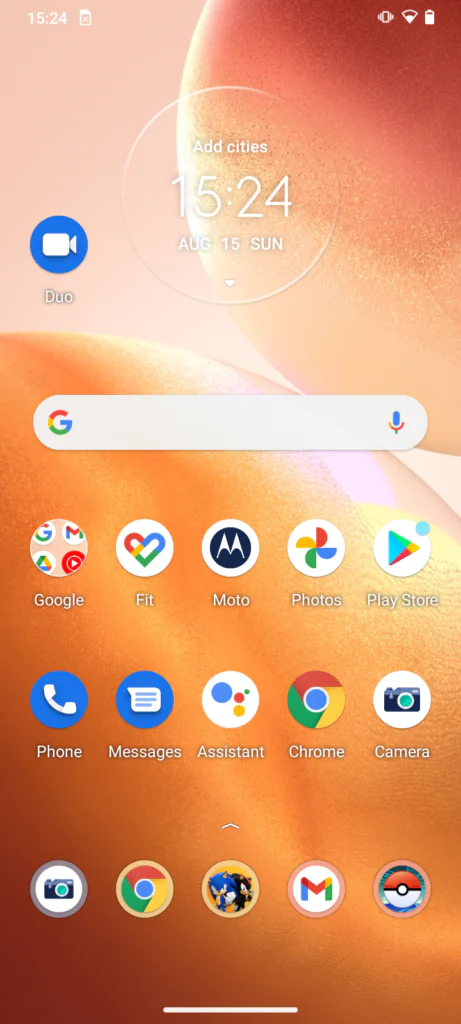
For some reason, my G20 was deprived of “Moto Functions”: this was due to the firmware of the pre-sale device. In regular Moto G10 and G20, everything is in place – a variety of themes and icons, gesture control (for example, launching a flashlight with a shake or a camera by rotating your wrist), split screen, features for gamers, an attentive display (active if you look at it), and more.
Another difference is that the G10 has a notification LED, blinking white. Once this feature was found in every smartphone, but now it has become rare. The G20, if you look closely at the light, seems to also have an indicator, but it does not blink.
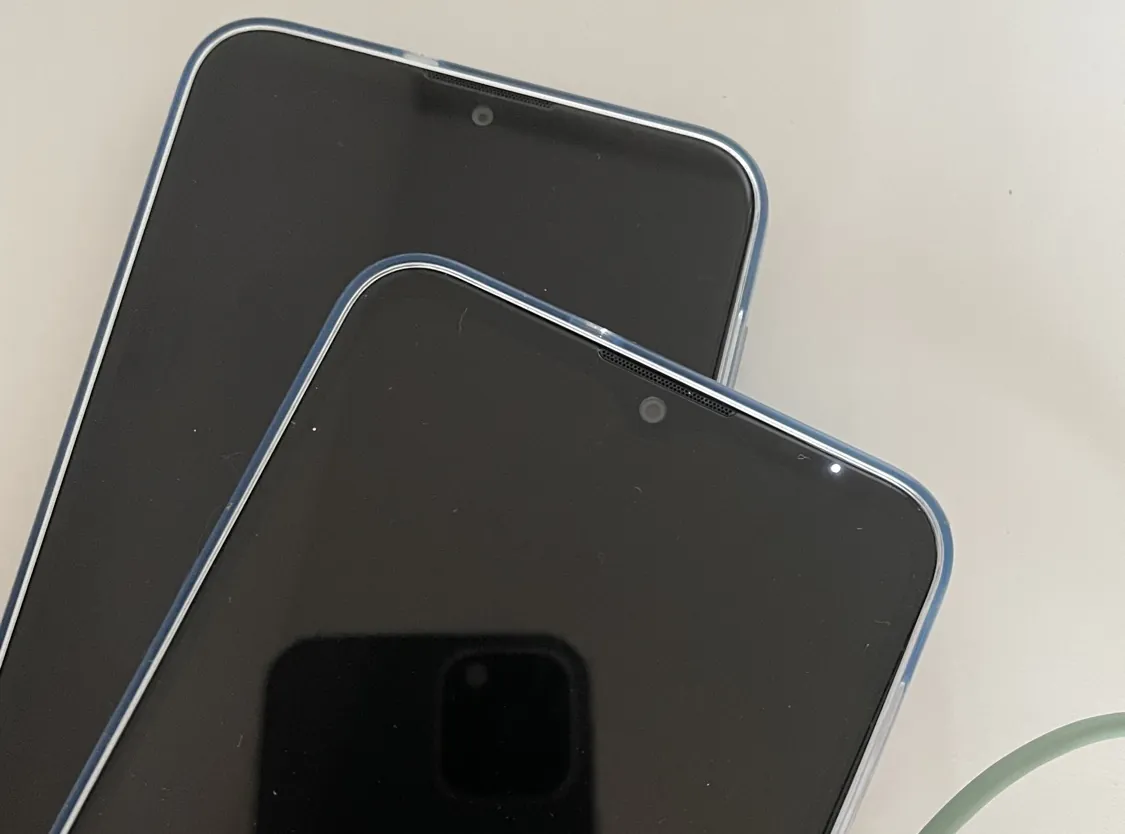
Bottom line: There are no important differences.
Battery
Both smartphones are equipped with 5,000 mAh batteries that are already standard for Moto. If we take into account the weaker hardware platform, then it is easy to guess that the devices can survive for quite a while. 2-3 days of work? Easy.
Both models can work for 17-18 hours at almost maximum brightness. Due to the adaptive screen refresh and the less energy efficient chipset, the G20 has a higher charge consumption, but the a difference is only 3-4%. It’s noticeable when watching a video, the G10 will last 17 hours 16 minutes, and the G20 will work for 16 hours 56 minutes. At the same time, 90 Hz screen refresh does not change much.
Both devices can be fully charged in about 2 hours 15 minutes, not very fast.
Bottom line: the G10 is better, but not by much.
Read also: Smartphones created in partnership with well-known brands: Winners and losers
Verdict
Motorola has once again released a good budget phone. Among the advantages of the Moto G10 and the G20 are high-quality IPS-displays (G20 even offers 90 Hz), excellent battery life, good software (“clean”, optimized Android), good photos in sufficient lighting, nice design, IP52, and sufficient performance in this price range.
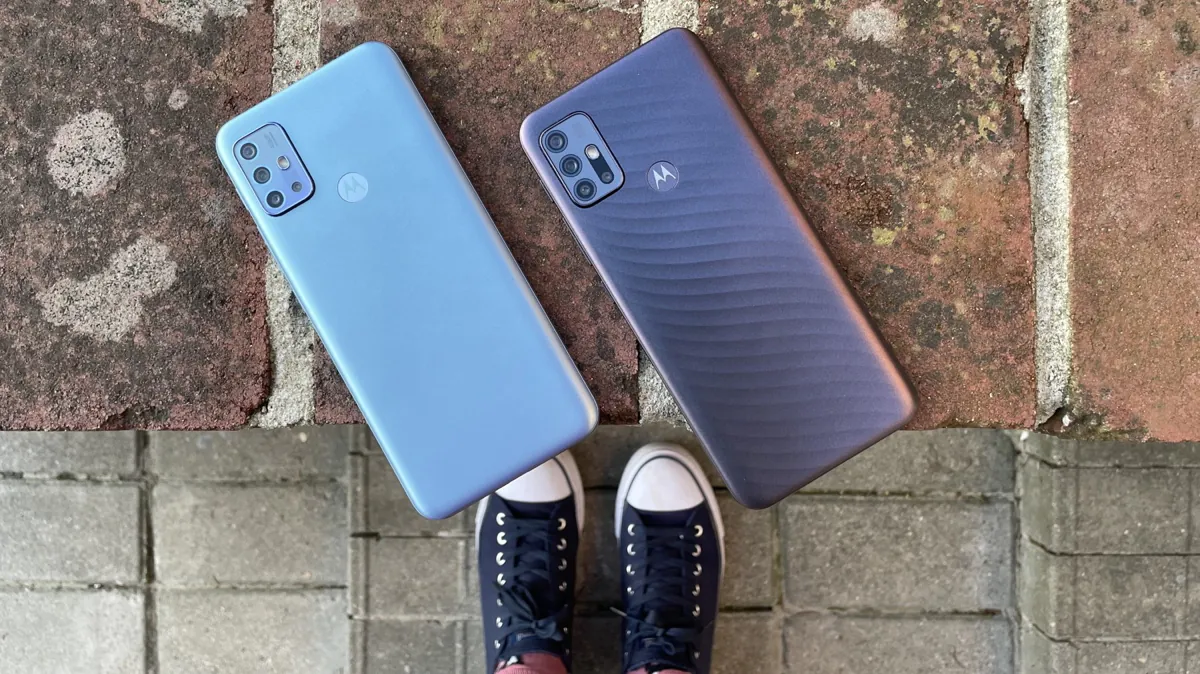
Cons, given the low price, do not seem critical: dim displays, bad photos in imperfect lighting, 30 fps when recording video, relatively slow charging, HD resolution.
If we compare the devices with each other, the G10 stands out due to its “wavy” back panel. The rest of the G20 is more interesting: it supports 90 Hz screen refresh, the processor is faster (albeit Chinese), the color reproduction of photos is better.
In my reviews, I always pay attention to competitors, since you can praise or critisize a particular smartphone, but without comparison with similar models from other brands the review will be incomplete.
So, for 150-170 dollars you can find a lot of interesting smartphones. Especially if you look for the discounts and promotions. For example, the POCO X3 NFC 6/64GB is often discounted now.
The realme 8 4/64GB is also more expensive, but for good reason. The Super AMOLED Full HD screen, the powerful Helio G95 chipset and great cameras are well worth it.
There is also the POCO M3 4/128GB, which is only slightly more expensive than the Moto G10/G20, but has a more powerful processor, really fast charging, better cameras, and a Full HD screen.
The Moto G30 6/128GB now costs about the same as the G10/G20. But it is also reasonable to overpay, since it has more RAM and better cameras.
If you don’t want to overpay, there are still options. For example, the slightly more affordable and time-tested Xiaomi Redmi 9T 4/64G with a 6000 mAh battery and Snapdragon 662. The Xiaomi Redmi 9 4/64GB is even cheaper and is also worth a look. And both, again, have Full HD screens.
I can also mention the Samsung Galaxy M12 SM-M127 4/64GB, which costs a little less than the G10/G20, but has a convenient OneUI shell, an excellent 90 Hz screen, decent cameras and a neat processor. The only drawback is the lack of support for 5 GHz Wi-Fi.
In short, Moto is good, but there are many alternatives. And the choice, as always, is yours!
Читайте также:

Subscribe to our accounts:


